






























































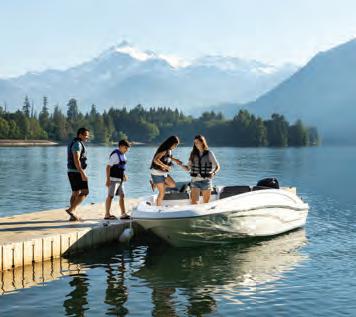
Embarking on the open water is an exhilarating experience, flled with the promise of adventure and relaxation. Whether you’re a seasoned sailor or a weekend cruiser, protecting your vessel with proper insurance is not just a choice—it’s a necessity. Explore the reasons why every boat owner should prioritize boat insurance for a worry-free voyage.


The open water can be unpredictable, with unexpected storms, collisions, or other potential accidents. Boat insurance can give you fnancial protection if there is damage to your vessel, providing coverage for repairs or replacement.
Accidents on the water can result in damage to other boats, docks, or even injuries to passengers. Boat insurance offers liability coverage, which can pay for damages or injuries you’re liable for while boating, up to specifed limits, and lawsuit costs if you’re sued. This includes damage you cause to another watercraft or if someone on or near your boat is injured and you’re found to be legally responsible.
Unfortunately, boat theft and vandalism are realities that boat owners face. Boat insurance has comprehensive and collision coverage that can protect you against events outside of your control, including theft and vandalism.
Accidents on the water may lead to injuries for you or your passengers. Boat insurance offers a range of optional medical payments coverage limits, helping to cover medical expenses if you are in an accident or someone is hurt on your boat, regardless of fault.
If you fnanced the purchase of your boat, most lenders require insurance coverage to protect their investment. Having boat insurance not only fulflls these requirements but also gives you peace of mind knowing that your fnancial interests are safeguarded.
Some water municipalities and marinas may require proof of insurance for docking or accessing certain areas. Boat insurance allows you the fexibility to explore different destinations without worrying about entry restrictions.
Emergency towing and assistance
Progressive boat insurance can include optional Sign & Glide® On-Water Towing coverage. If your boat is disabled or breaks down on the water, Sign & Glide® pays for on-water towing, jump starts, soft un-groundings, and fuel delivery.
Wreckage removal
If your boat sinks, Progressive boat insurance will cover the cost of removing your boat from the water (if removal is legally required).
Investing in boat insurance is not just about protecting a valuable asset; it’s about safeguarding the memories, experiences, and joy that come with your on-water adventures. Don’t let unforeseen circumstances disrupt your journey—navigate with confdence, knowing that Progressive boat insurance has you covered. Ensure a smooth and worry-free voyage, because when it comes to your boat, peace of mind is the ultimate luxury.
Scan to get a quote in as little as 4 minutes
learn more.




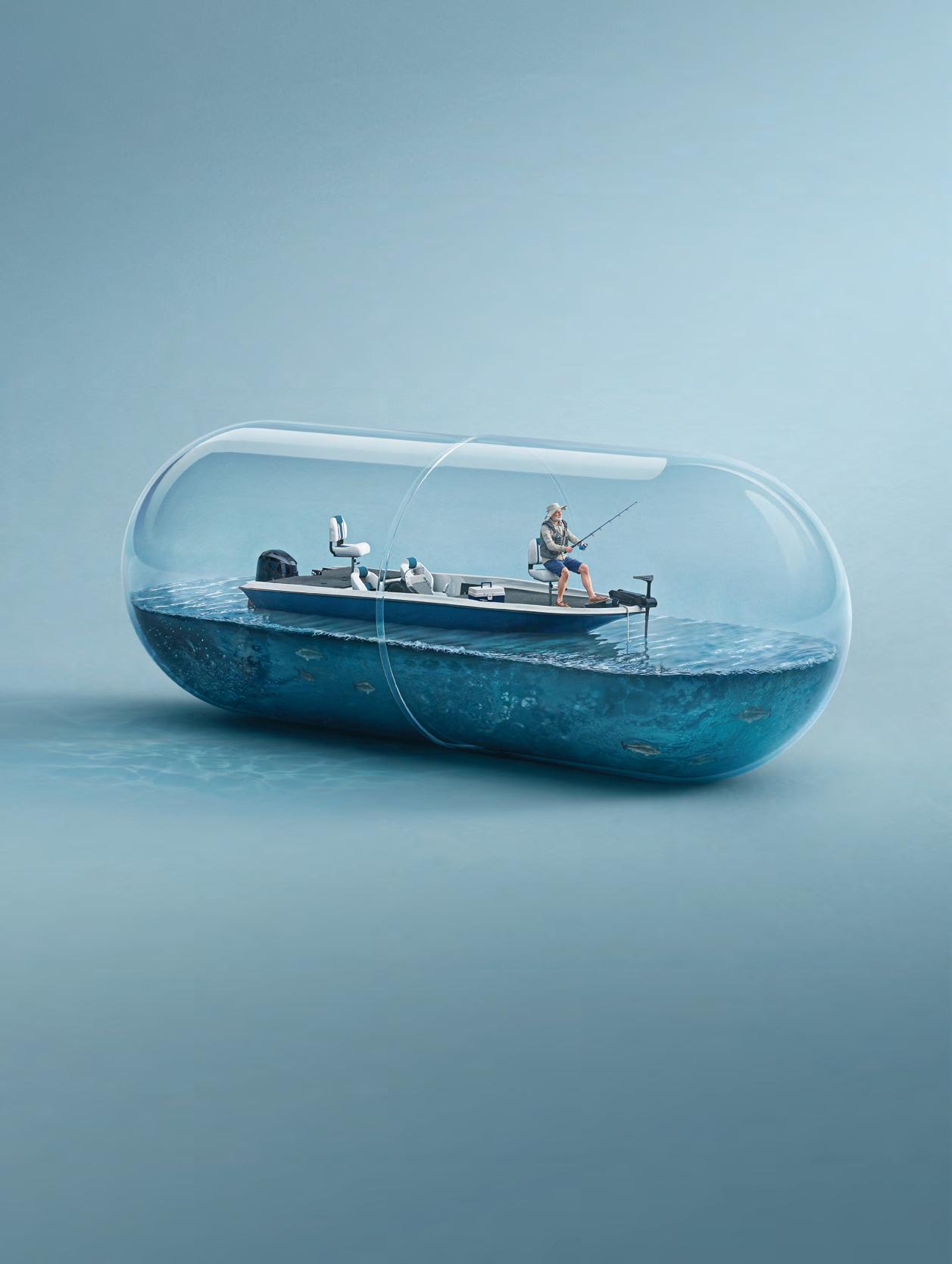





















The quest to find the ultimate men’s watch has traditionally been a difficult one in the world of fashion. A timepiece with the perfect look and functionality has long been the goal of both watch designers and enthusiasts alike.
The Renegade Blue Chronograph Men’s Watch is the perfect combination of style and function. With a sleek design that features a bold blue dial, rose gold hands and hour markers, and a durable sports silicone band, this timepiece will instantly elevate any outfit.
The three sub-dials provide a precise timekeeping function. The sports silicone band is durable yet comfortable, providing a secure fit that won’t slide around on your wrist. The band is also easy to clean and maintain, making it perfect for everyday wear. The watch’s 30 Metre Water Resistance rating ensures that it has you covered whatever the occasion.
The Renegade Blue is also built to last, with a sturdy stainless steel caseback and exquisitely detailed bezel. The watch is powered by a super reliable quartz movement, which is covered by our incredible 5 Year Movement Warranty - ensuring accurate timekeeping for many years to come!
At the amazingly low price of just $99 plus S&H, this watch is an absolute steal. Don’t miss out on the chance to own the Renegade Blue and Rose Gold Chronograph Men’s Watch - order yours today!





By Dr. Benjamin Cole
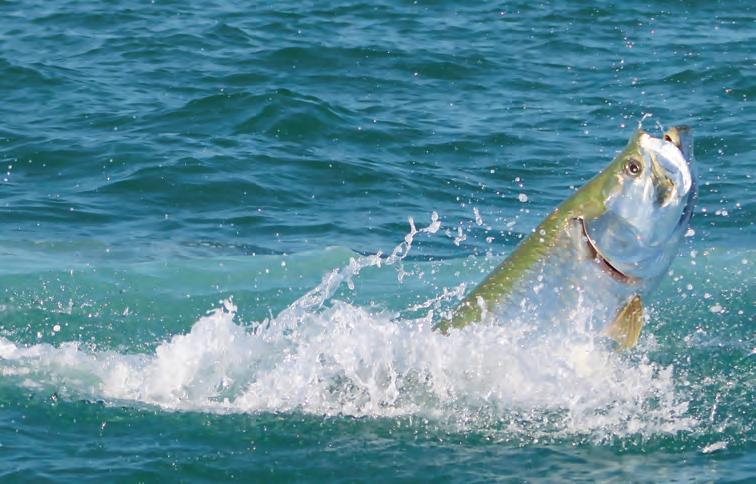
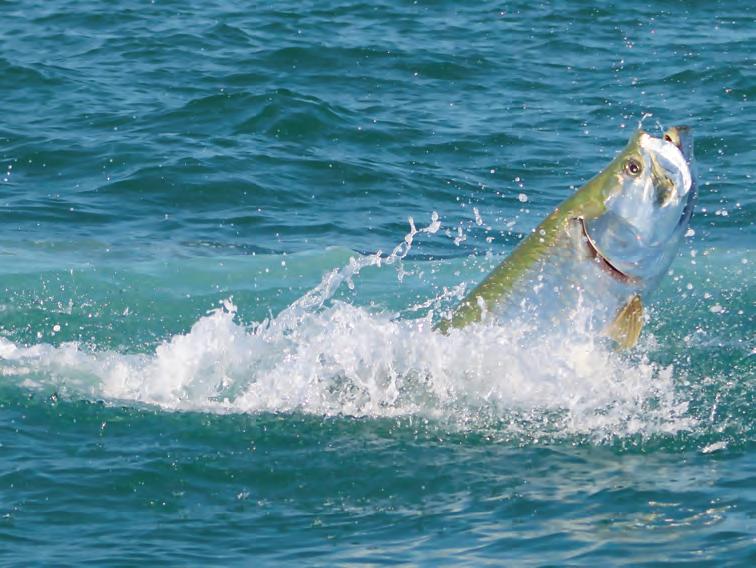
Tarpon (Megalops atlanticus), known as “silver kings,” are renowned for their acrobatic leaps and strength, making them a top target for anglers. However, their fascinating migration patterns also play a crucial role in maintaining marine ecosystems.
Tarpon migration is largely driven by the need for feeding and reproduction. Tese highly
migratory fsh can travel thousands of miles, infuenced by water temperature, food availability, and spawning needs. Preferring temperatures above 72°F (22°C), tarpon move south during colder months, seeking warmer waters.
the U.S. Atlantic coast, they travel from Virginia to Florida and the Caribbean, while in the Gulf, they move from Texas and Louisiana to Mexico. Teir northward migration begins in late spring, driven by rising temperatures and abundant food. By summer, tarpon reach as far as Virginia, signaling the start of fshing season. As fall sets in, they return south to warmer wintering grounds.
A key driver of tarpon migration is spawning, typically occurring between May and September in ofshore areas with strong currents. Afer spawning, larvae are carried into estuarine environments like mangroves and marshes, crucial nurseries for juvenile tarpon. Tese habitats are essential for the species’ survival, but environmental degradation threatens their health.
While tarpon are primarily a catch-andrelease species, improper handling during fshing can lead to mortality. Conservation eforts, including safe fshing practices and habitat protection, are essential for sustaining tarpon populations. Organizations like the Bonefsh & Tarpon Trust work to monitor migration, protect critical habitats, and promote responsible fshing.

Found in the Atlantic Ocean and Gulf of Mexico, tarpon migration varies by region. Along
Tarpon migration is a remarkable journey, driven by the search for favorable conditions. By protecting these iconic fsh and their habitats, we can ensure their survival and preserve their role in marine ecosystems for future generations.

Capt. Russ Walker

If a fsh can see the bait, they’ll hit it much faster than if they must search through grass or mud. Tat’s why I rig to suspend the bait, keeping it above the bottom where fsh can easily spot it. Grass fats are incredibly productive fshing grounds, and targeting the edges where the fat drops of into deeper water is the key to catching bigger fsh.
In around fve to six feet of water, grass growth stops, forming a natural erosional edge where fsh like trout, cobia, tarpon, and mackerel hunt. Tese edges act like a “superhighway” for predatory fsh. While smaller fsh are found on the fat, the big ones hang near the edge, diving into the deeper channel when necessary.
Te best tool for this fshing method is a fat-topped popping cork. Te cork keeps the bait suspended at the desired depth and makes a popping sound when tugged, drawing fsh to the noise. Tis is especially useful for beginners, as it’s an easy technique that produces great results. With just a few pops, the live shrimp below the cork will jump into plain sight, attracting the fsh.
As a charter captain, I’ve found this method efective for anglers of all experience levels. It’s not uncommon to catch 80 to 100 fsh during a four-hour trip using this rig. It works equally well ofshore near wrecks, suspending bait for species like permit.
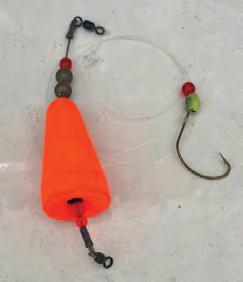
I make my own 200 lb. rated, fat-topped popping bobbers, stronger and shorter than store-bought versions. Tey’re perfect for fshing
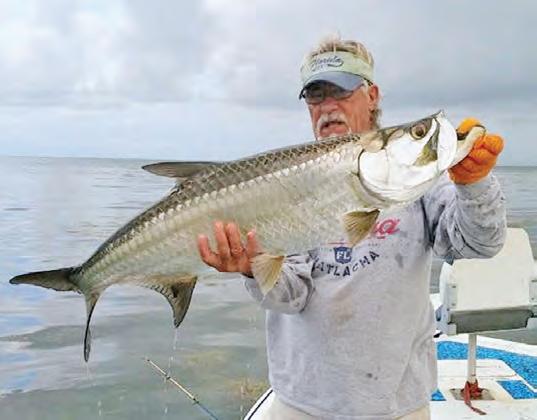
everything from trout to tarpon, with only the hook size and leader changing. Te leader length is always four and one half feet, and the magic depth on the grass-fat edge is fve feet.
Typically, I use a 3/0 Mustad Wide Gap Hook with a 1/4 oz. egg sinker and a 30 lb. fuorocarbon leader. Tis rig works wonders for trout, pompano, mackerel, snook, redfsh, and ladyfsh.
So, give it a try! Pop the cork a few times, remove the slack, and hang on. When the bobber disappears, just “yank it and crank it.” You’ll see your catch increase by at least 40 percent. Fish On!
Capt. Russ Walker is a USCG Masters licensed fshing guide and owner of Tide Walker Charters out of Cape Coral, FL. www.tidewalkercharters.com
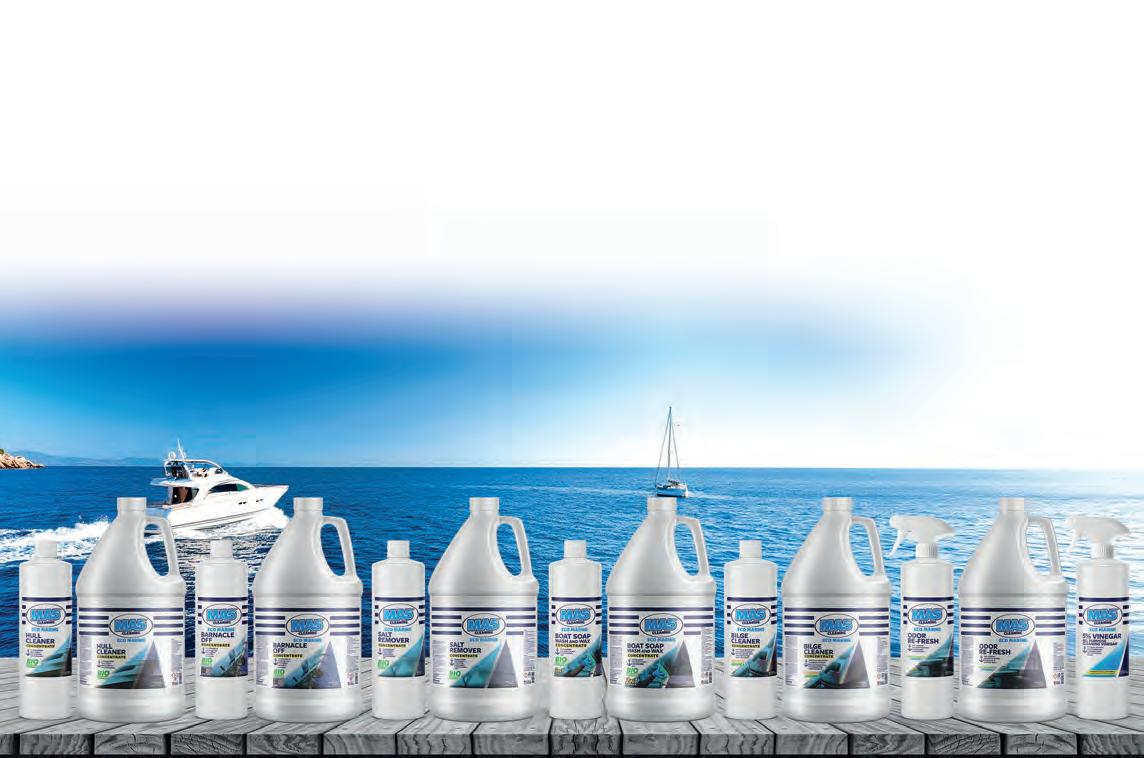
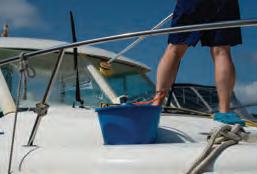
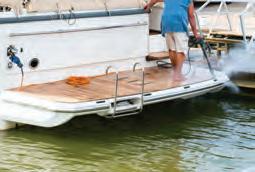

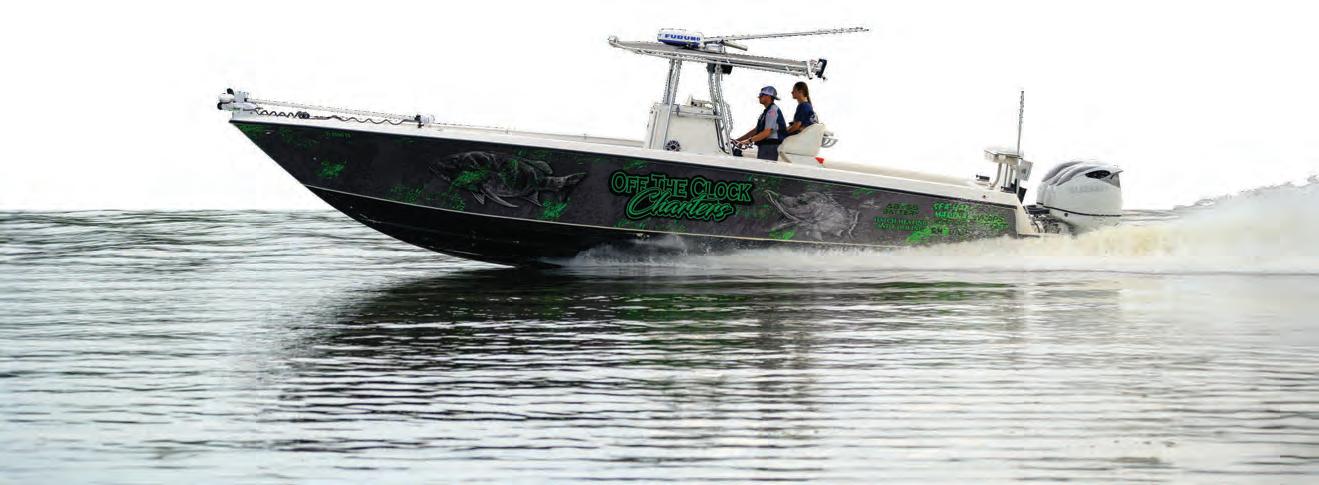









By A. deGruchy
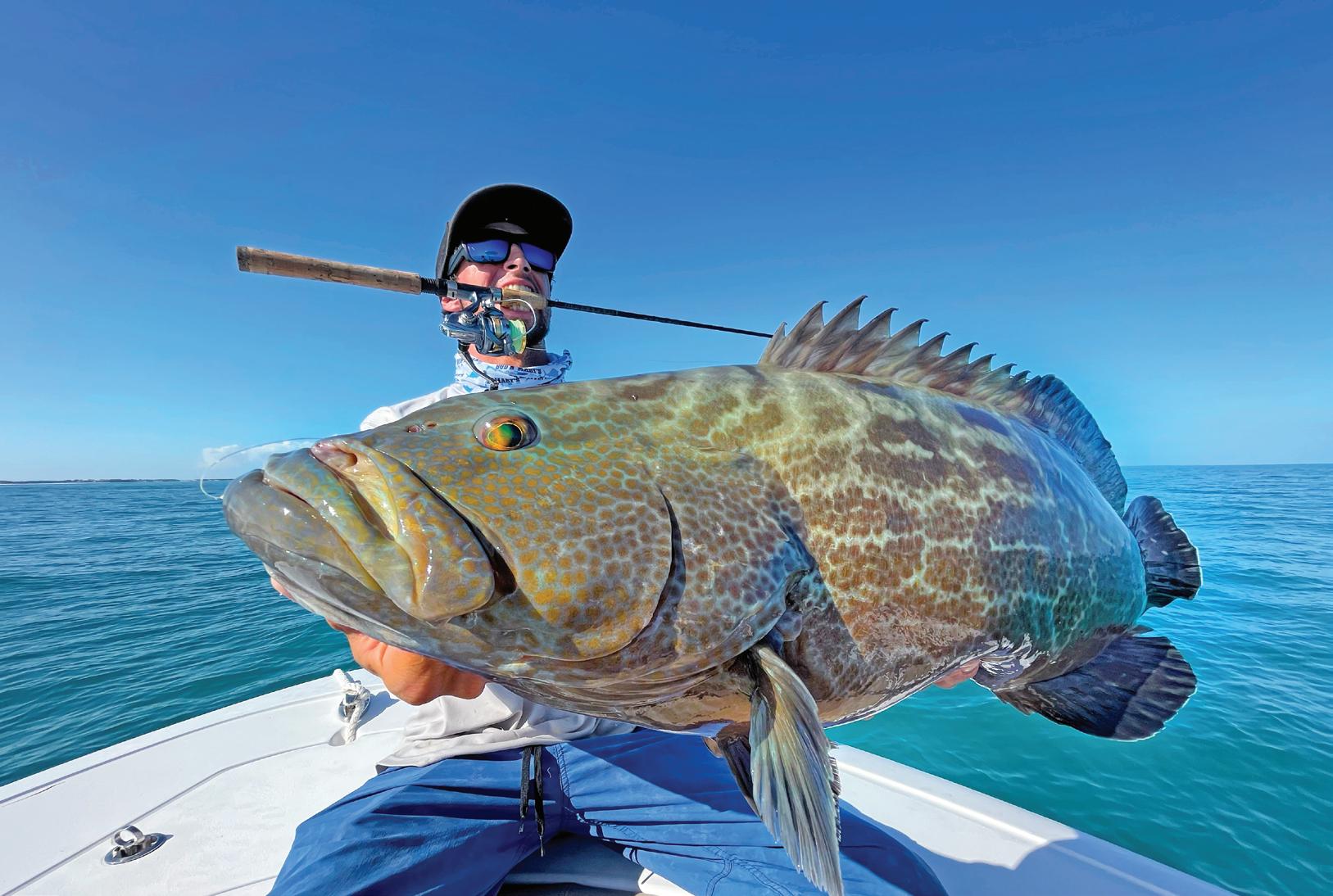
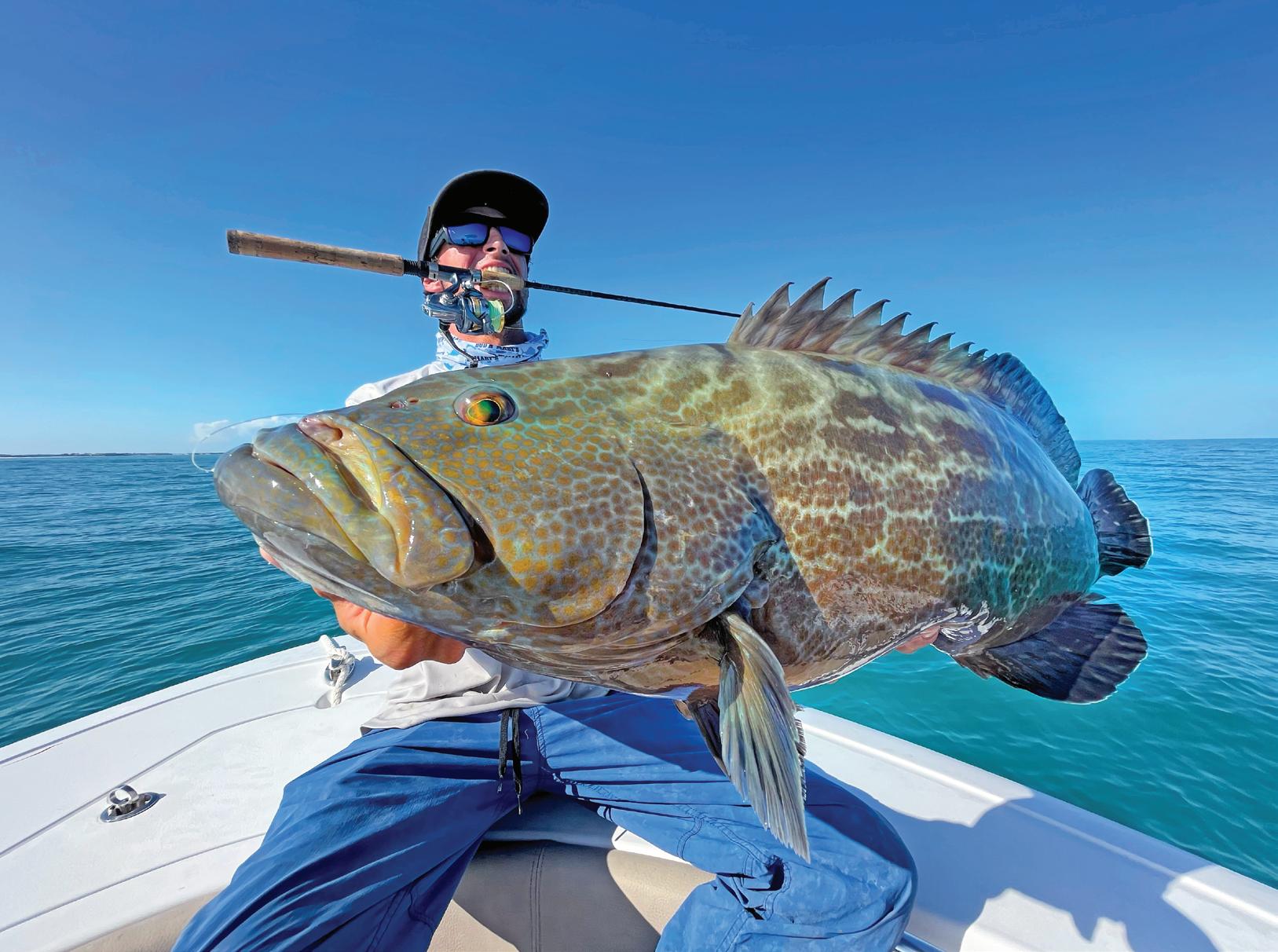
The Florida Keys transform into a fishing paradise as the intense summer hurricane weather fades and cooler fronts begin to roll in. This fall, it’s all about the patch reefs... vibrant underwater gardens teeming with a variety of species. Targeting these patches is incredibly fun and rewarding. You’ll encounter species like snapper and grouper, along with various types of mackerels. Light-action fishing is always a blast,
and in the Keys, there are countless patch reefs to explore.
To find a patch reef, look for shallow spots scattered with coral and sand, typically just a few miles offshore at depths of typically between 1530 feet. For gear, we recommend using a PENN Spinfisher VII 3500-4500 combo. The Mustad 3/0 Demon circle hooks are reliable, and when it comes to bait, live shrimp are unbeatable. It’s all about enjoying the vibes and seeing what you can reel in... mutton snapper, red groupers, porgies, Spanish mackerels, and much more!
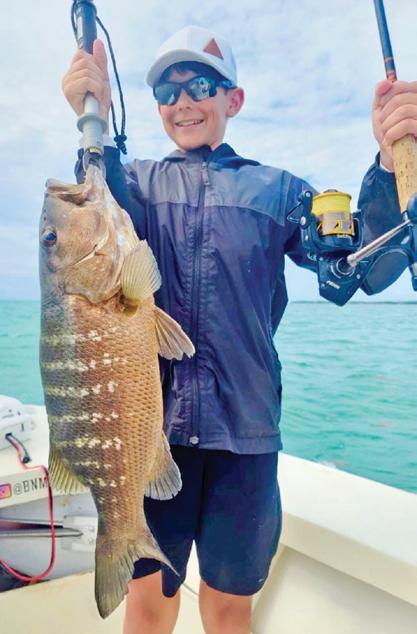
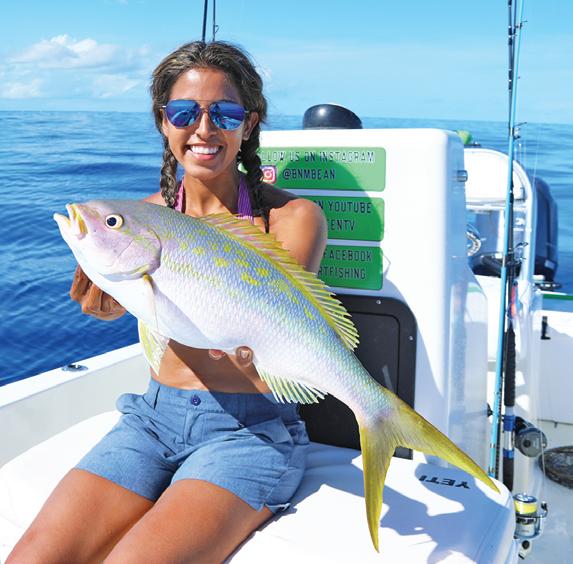
This fall will be even more special with the opening of Three Waters Resort in Islamorada. This elegant new destination offers not just stunning accommodations but also brand-new restaurants and a magnificent ambiance. Imagine savoring fresh culinary experiences while soaking up breathtaking waterfront views. After a day on the water, kick back and enjoy a drink at one of the resort’s dining venues or onsite restaurants.
So come on down this fall and get ready for some fun fishing in the Florida Keys. With Three Waters Resort as your home base and Bean Sportfishing Charters as your vessel, you’ll be hooked on the fishing, the food, and the laid-back vibes!
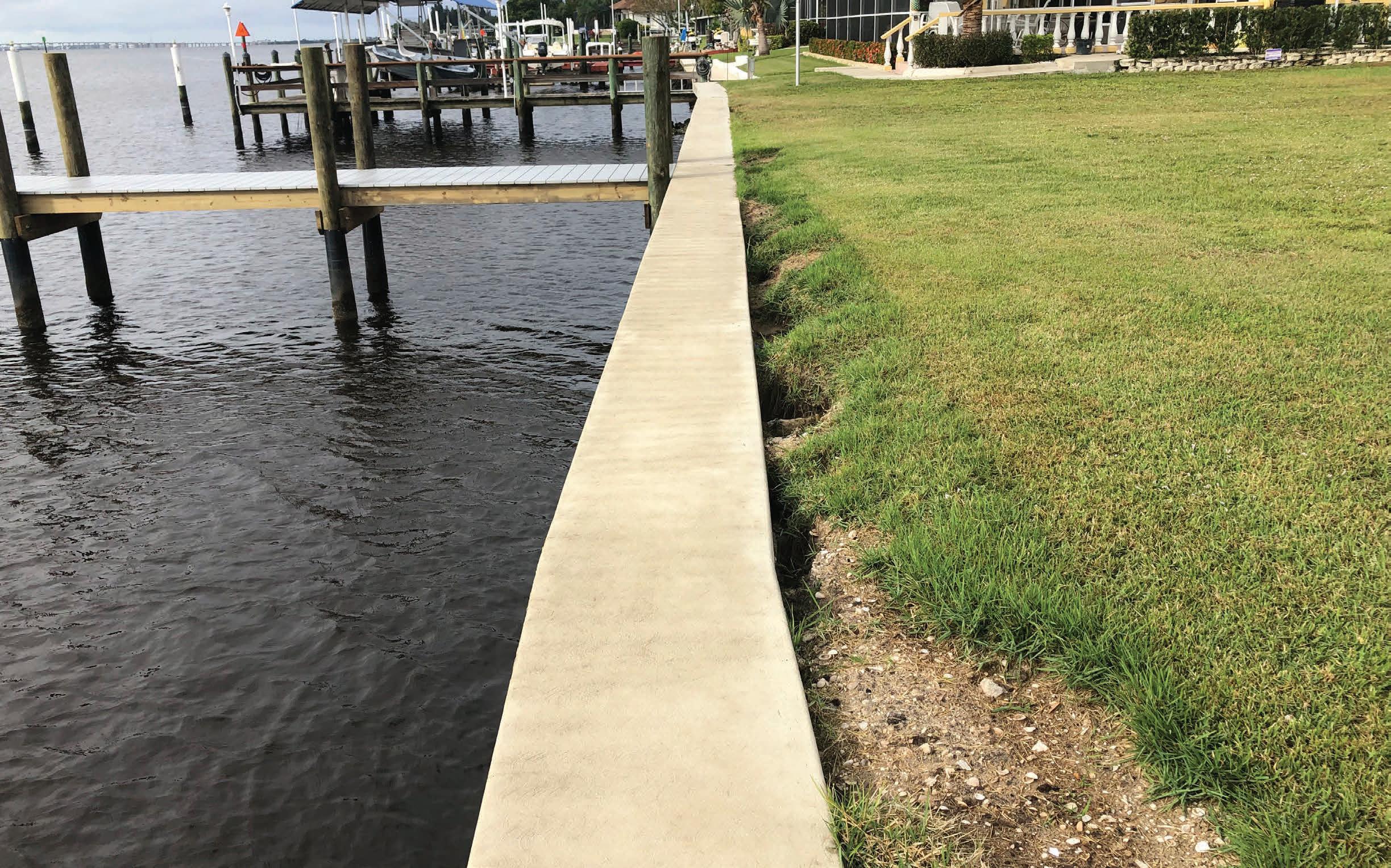


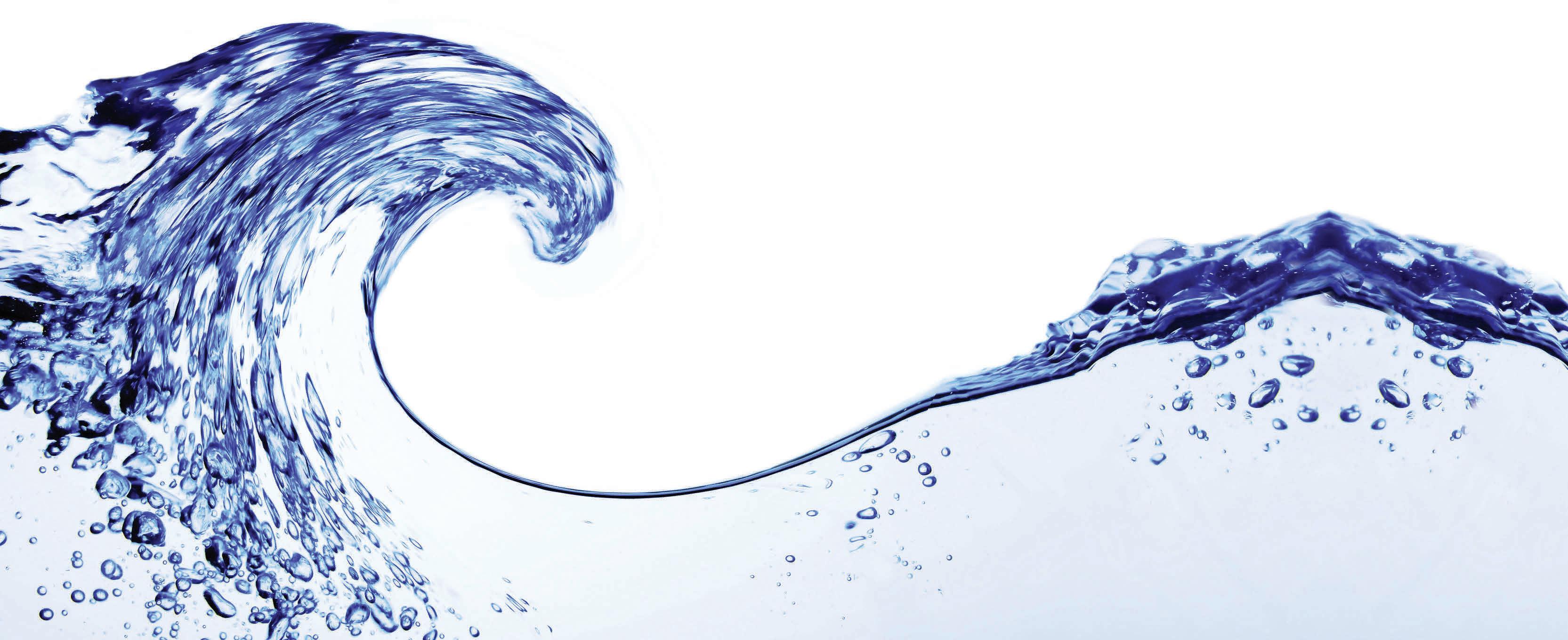



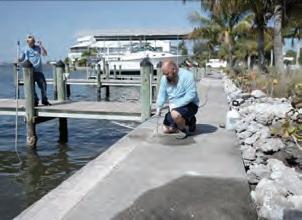













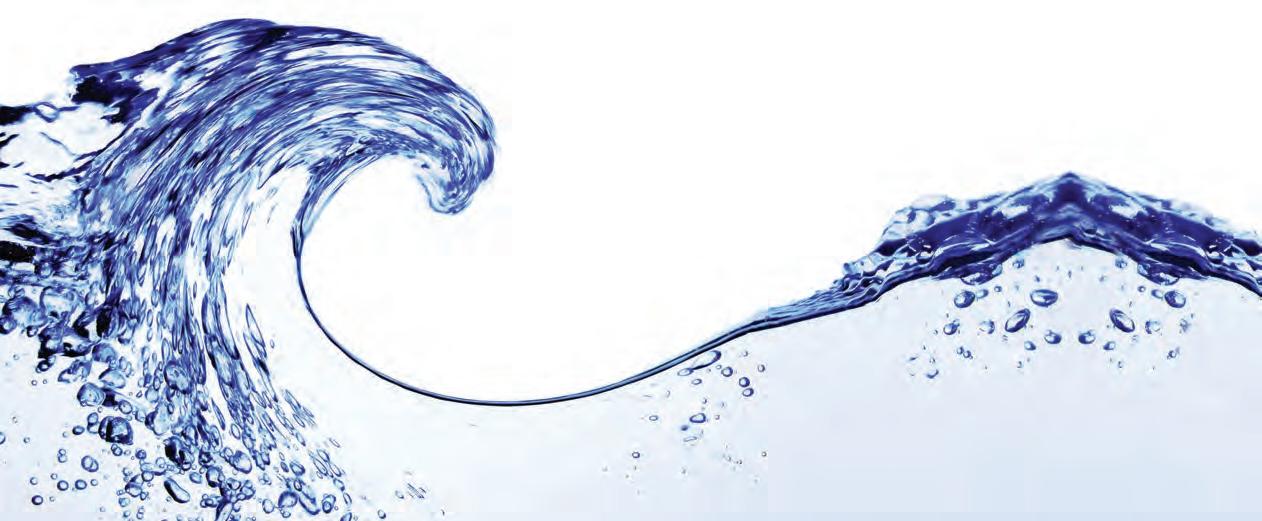
By Capt. Jack Gohmert

Creating your own chum bait can signifcantly boost your fshing success. Chum, a mixture of fsh parts and attractants, draws fsh to your spot by creating a feeding frenzy. Making your own chum lets you tailor it to the fsh you’re targeting and saves money. Here’s a simple guide to making efective chum and using it for the best results.
Chum is a blend of fsh-based materials that attract predatory fsh. When
placed in water, it forms a scent trail and visual signal that lures fsh like snapper, tuna, and sharks. Whether you fsh ofshore, from a pier, or inshore, chum helps by concentrating fsh around your location.
Making chum is straightforward. You’ll need the following:
Tools:
• Food processor or meat grinder
• Bucket or container
• Rubber gloves
• Freezer bags (for bulk storage)
Ingredients:
• Fish scraps (bait lefovers, carcasses)
• Canned fsh (sardines, mackerel, or tuna)
• Fish oil or menhaden oil
• Breadcrumbs or oats (to bulk up the mix)
• Optional: sand or cornmeal (to sink chum faster)
1. Gather Fish Scraps: Collect lefover fsh scraps or use canned fsh. Local fsh markets are great for sourcing discards.
2. Grind the Ingredients: Use a food processor to grind fsh scraps into a paste. For canned fsh, mash it along with the oil for a strong scent trail.
3. Add Bulk: Mix in breadcrumbs, oats, or cornmeal to bulk up the chum. Tese ingredients absorb oils and create a scent cloud. Sand can help sink the chum.
4. Enhance the Scent: Stir in fsh oil to intensify the scent, making it travel farther underwater.
5. Pack and Freeze: Freeze large batches in bags. When fshing, break of chunks and toss them into the water.
For ofshore fshing, throw small amounts of chum every few minutes to create a steady attractant. For shore or pier fshing, use a chum bag or cage to suspend and slowly release the chum. Adjust the size and consistency of your chum based on the fsh species. Larger fsh prefer coarse chum with chunks, while smaller fsh may respond better to a fne mix that creates a cloud.
Making your own chum is a cost-efective way to improve your fshing. With minimal tools and ingredients, you can craf a bait that attracts fsh and turns a slow day into a successful one.

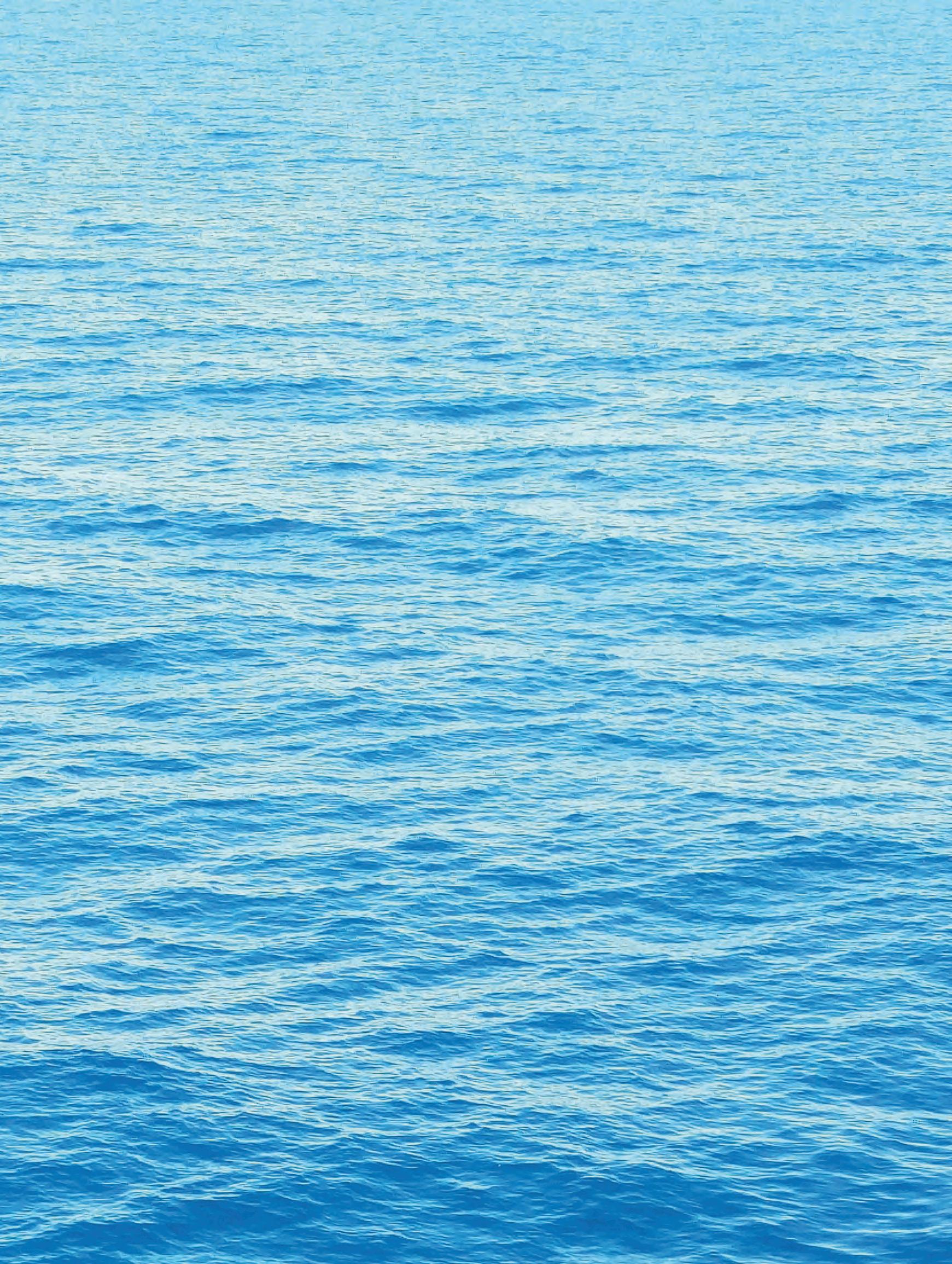

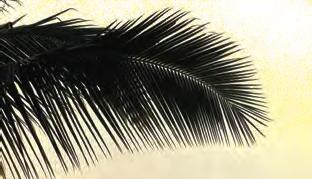

By Misti Guertin, Publisher CoastalAnglerMagazine,TreasureCoast
As we navigate the aftermath of Hurricane Milton, our hearts are heavy with the toll it has taken on our community. While we knew Milton was heading for the west coast, few could have anticipated the severe impact on the east coast, which grappled with an unexpected wave of tornadoes. The National Weather Service in Melbourne had cautioned us that tornadoes were a possibility. However, the reality of 126 tornado warnings and at least 10 confirmed tornadoes in Florida before Milton even made landfall was far beyond our wildest expectations.
Hurricane Milton arrived with a ferocity that left many in disbelief. The storm made its presence felt not just through wind and rain, but also through violent tornadoes that ripped through neighborhoods, turning lives upside down in an instant. Communities that had braced themselves for tropical storm winds found themselves facing the terrifying roar of tornadoes, causing destruction that will take months, if not years, to recover from.
The emotional impact of such devastation can be just as damaging as the physical destruction. As local residents pick up the pieces, we must recognize that each report of damage corresponds to a personal story of loss, heartache, and resilience.
The destruction of homes, the shattering of lives, and the injuries to individuals remind us that nature is both beautiful and terrifying, capable of nurturing and devastating in equal measure.
Among those affected is our own Capt. Michael Mauri, a respected fishing guide in our community and the author of the Flyfishing Corner. Tragically, he lost his home, his truck, and his bay boat. Capt. Mauri’s experiences echo those of many who have lost not just their possessions but also their sense of security and stability. The resilience of our community is reflected in the determination of individuals like Capt. Mauri, who, even in the face of such loss, continues to inspire others with his strength and passion for the environment.
As of today, October 12, several of our writers remain without electricity and are engaged in the daunting task of home repairs. Their contributions to this issue come amidst chaos and uncertainty, and we appreciate their dedication to keeping our fishing community informed and connected despite their personal challenges.
This issue is particularly poignant as we approach Thanksgiving, a
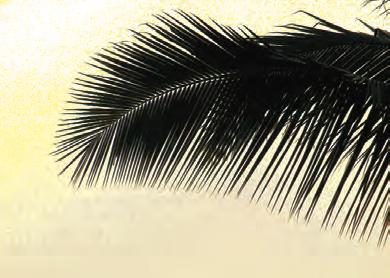
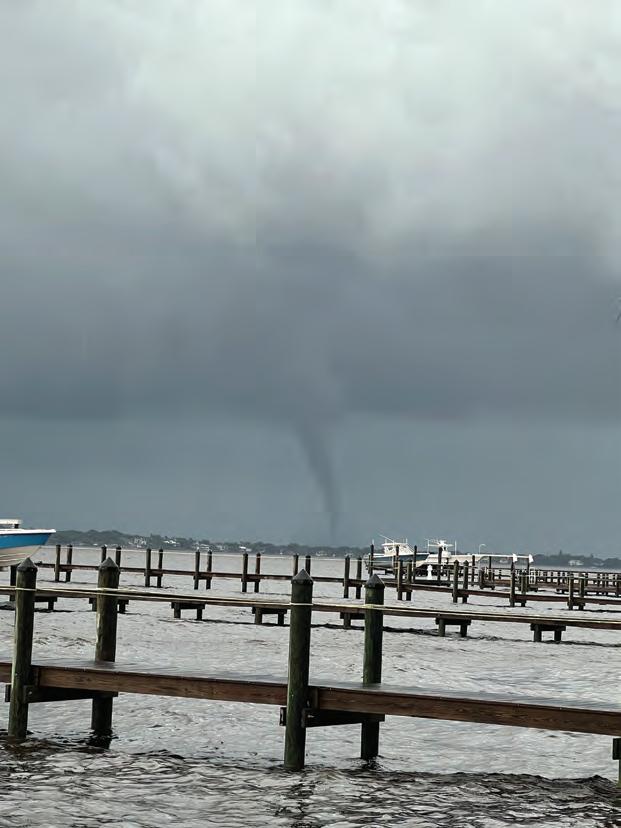
holiday traditionally dedicated to gratitude and reflection on our blessings. This year, as families gather to celebrate, it is crucial to acknowledge those who have lost so much. The spirit of Thanksgiving compels us to reach out to those in need, to offer support, and to extend our hands to rebuild what has been lost.
In light of this catastrophic event, we encourage everyone to share their blessings and be thankful for what they have. If you have the means, consider contributing to local relief efforts aimed at helping those who are suffering. Whether through donations, volunteering time, or simply offering a listening ear, every action counts.
As we reflect on the challenges faced by our community, let’s remember the power of human connection. We are reminded that in times of crisis, the bonds of family and friendship become our greatest sources of strength. Hug your loved ones a little tighter this Thanksgiving, and take a moment to reach out to those who may feel isolated or lost in the aftermath of Hurricane Milton. Our community’s resilience is a testament to our collective spirit. As we recover and rebuild, let’s hold on to hope, supporting one another as we look towards a brighter future. Stay safe, be kind, and embrace the spirit of togetherness as we navigate this difficult time together.
November
November
November
What do the ratings mean?
POOR day basically means the fish will either steal all your bait or will not even touch your line.
FAIR day means that you catch one or two fish but you will have to work hard to do so.
GOOD day means that you will catch enough fish to feel gratified.
BEST day means that you will catch something almost every time you cast your line in the water.
SOURCE: The Old Farmers’ 2024 Almanac

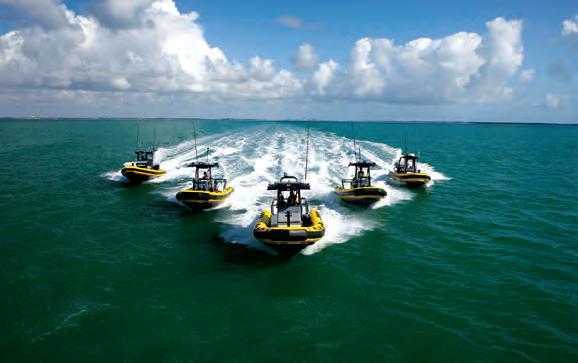
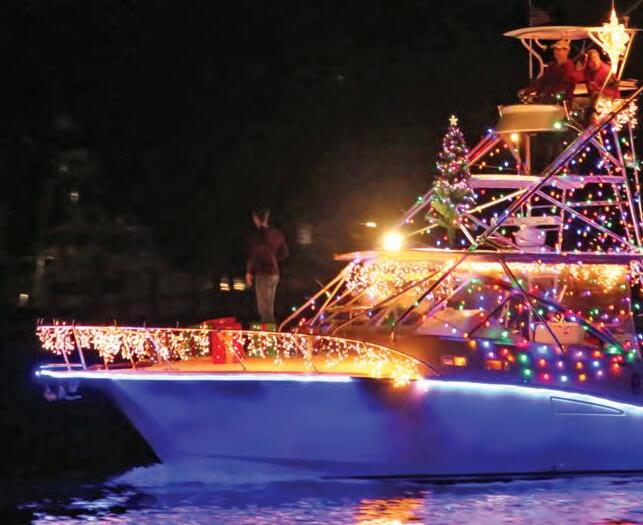
The holidays are a time for giving back and MIATC is ready to spread holiday cheer in the communities it serves through its Annual Christmas Boat Parades.
Proceeds from this Christmas tradition benefit the Marine Industries Association of the Treasure Coast’s (MIATC) workforce readiness initiative. This fund creates career pathways into the marine industry for the next generation of highly skilled tradespeople.
All three parades (Stuart, Fort Pierce and Vero Beach) will occur on Saturday, December 14, 2024. Boater registration is free. Register here: https://miatc.org/events/christmas-boat-parades.
Sponsorship opportunities are available. Call 772-692-7599 for more information.
Captain’s Meeting/Party
WHEN: 5 to 7 p.m. Thursday, December 12
WHO: For all participating captains and one crew member
WHAT: Meeting to discuss parade logistics - includes complimentary dinner, cash bar and music
WHERE: Fort Pierce Yacht Club, 700 N Indian River Dr, Fort Pierce Parade
WHEN: Saturday, December 14, 6 p.m. - Staging at 5:30 p.m.
WHERE: Day Beacon 188 off Fort Pierce City Marina
Sea Tow is happy to extend it’s service to include tows from Nothern Bahamas, Green Turtle, West End Marsh Harbour, Hope Town and Grand Cay to the U.S.
Whether you need a timely tow or help offshore, Sea Tow Captains are standing by 24/7.
Why wait? Join today and get 2 months free! (That’s a $28 value!) Use discount code: TCT.
Join Sea Tow Treasure Coast \ 772-225-3144
seatow.com/local/treasurecoast
800-4-SEATOW
Awards Ceremony
WHEN: 5 to 7 p.m. Friday, December 20
WHO: For all participating captains and one crew member.
WHAT: Awards ceremony - includes complimentary dinner, cash bar
WHERE: Fort Pierce Yacht Club, 700 N Indian River Dr, Fort Pierce
ROUTE: This year’s route will begin at Day Beacon 188, near the Fort Pierce City Marina. Boats will head north along the Intracoastal Waterway through the Fort Pierce South Causeway Channel. Boats will continue north through the Turning Basin and make the turn east towards Fort Pierce Inlet. Boats will turnaround at the Square Grouper and venture back west, ending in the Turning Basin.
STUART PARADE
Captain’s Meeting:
WHEN: Thursday, December. 12 at 5 p.m.
WHO: For all participating captains
WHAT: Meeting to discuss parade logistics, includes drinks and hors d’oeuvres
WHERE: Chapman’s School of Seamanship (Tiki hut across the street) 4343 SE St. Lucie Blvd, Stuart, FL 34997
Parade
WHEN: Saturday, December 14, 6 p.m. - Staging at 5:30 p.m.
WHERE: Staging begins near Sandspirit Park docks
ROUTE: This year’s route will begin in the Manatee Pocket and end near
Park in Downtown Stuart.

VERO PARADE
Captain’s Meeting/Party

WHEN: 6 p.m. Wednesday, December 11
WHO: For all participating captains WHAT: Meeting to discuss parade logistics, includes drinks and hors d’oeuvres
WHERE: Quail Valley River Club 2345 Florida A1A, Vero Beach, FL 32963
Parade
WHEN: Saturday, December 14, 6 p.m. - Staging at 5:30
WHERE: Staging begins in the Intracoastal Waterway, north of the Merrill Barber Bridge in Vero Beach
ROUTE: This year’s route will begin north of the Merrill Barber Bridge in the ICW. Boats will proceed northward and navigate the City of Vero Beach Marina channel, then head south towards the Quail Valley channel, looping back around to the ICW and heading south to the Young’s Park channel eventually turning northward and ending in the ICW near Royal Palm Pointe dock.




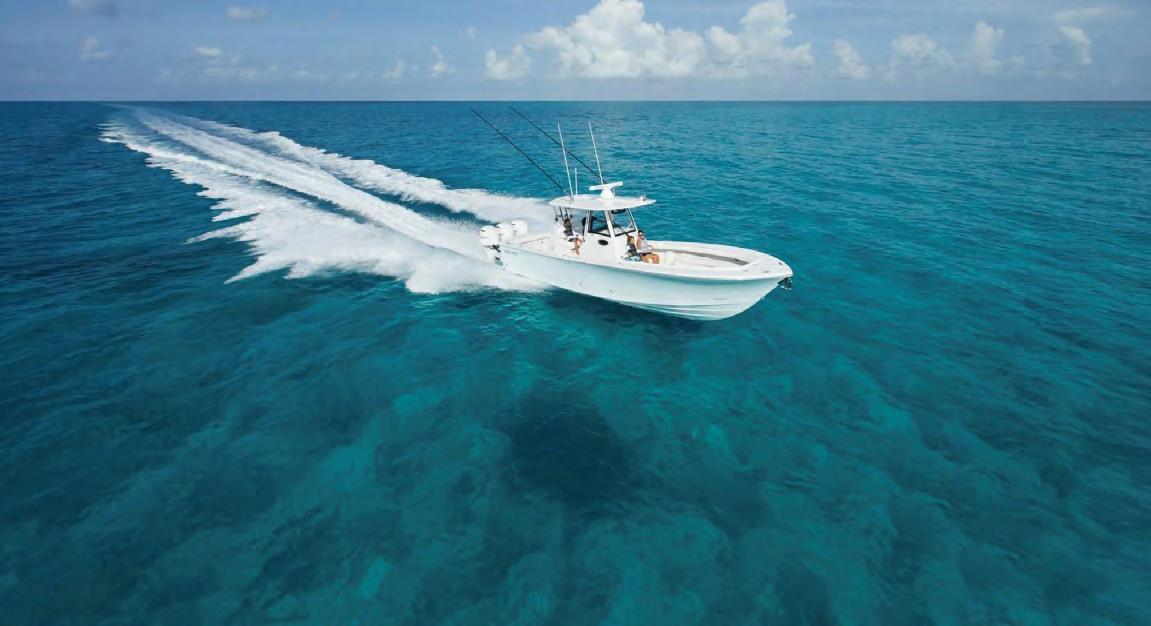














1F 2:34 AM 0.39 L
9:14 AM 2.96 H
3:00 PM 0.71 L
9:17 PM 2.74 H
2SA 3:07 AM 0.37 L
9:52 AM 2.95 H
3:34 PM 0.74 L
9:54 PM 2.7 H
3SU 2:41 AM 0.38 L
9:30 AM 2.91 H
3:08 PM 0.79 L
9:30 PM 2.64 H
4M 3:16 AM 0.41 L 10:11 AM 2.84 H
3:44 PM 0.85 L
10:09 PM 2.58 H
5TU 3:55 AM 0.45 L
10:54 AM 2.76 H
4:25 PM 0.91 L 10:51 PM 2.51 H
6W 4:39 AM 0.51 L
11:41 AM 2.68 H
5:13 PM 0.96 L
11:41 PM 2.46 H
7TH 5:31 AM 0.57 L 12:33 PM 2.63 H
6:11 PM 0.97 L
8F 12:39 AM 2.44 H
6:33 AM 0.63 L
1:30 PM 2.6 H
7:17 PM 0.91 L
9SA 1:45 AM 2.46 H
7:42 AM 0.65 L
2:29 PM 2.62 H
8:24 PM 0.76 L
10SU 2:55 AM 2.57 H
8:51 AM 0.62 L
3:28 PM 2.68 H
Capt. Scott Fawcett
you have to be ready. I like trolling primarily smaller baits and having one larger bait out there in the short rigger position. It’s inevitable that the biggest fish always seem to eat the small bait anyways but it’s nice to give them the option.
9:55 AM 0.54 L
4:25 PM 2.77 H
10:23 PM 0.28 L
12TU 5:04 AM 2.94 H
10:53 AM 0.45 L
5:19 PM 2.88 H
11:16 PM 0.04 L
13W 6:01 AM 3.13 H
11:47 AM 0.35 L
6:11 PM 2.97 H 14TH 12:06 AM -0.16 L
6:55 AM 3.27 H
12:38 PM 0.28 L
7:02 PM 3.04 H
15F 12:56 AM -0.28 L
7:46 AM 3.34 H
1:28 PM 0.26 L
7:52 PM 3.06 H 16SA 1:45 AM -0.31 L
8:36 AM 3.33 H
2:17 PM 0.28 L
8:41 PM 3.03 H
17SU 2:35 AM -0.26 L
9:25 AM 3.24 H
3:07 PM 0.34 L
9:31 PM 2.95 H
18M 3:25 AM -0.13 L
10:15 AM 3.1 H
3:58 PM 0.45 L
10:21 PM 2.83 H 19TU 4:17 AM 0.04 L
11:05 AM 2.93 H
4:51 PM 0.57 L
11:13 PM 2.67 H
20W 5:12 AM 0.24 L
11:57 AM 2.75 H 5:49 PM 0.68 L
9:26 PM 0.54 L 11M 4:02 AM 2.73 H
SEBASTIAN (INLET)
TIME OFFSET
High Tide -48 min
Low Tide -24 min
HEIGHT OFFSET
High Tide .93 feet
Low Tide 1.0 foot
JENSEN BEACH (INDIAN RIVER)
TIME OFFSET
High Tide +2 hrs; 17 min
Low Tide +3 hrs; 4 min
HEIGHT OFFSET
High Tide .48 feet
Low Tide .92 feet
VERO (OCEAN)
TIME OFFSET
High Tide -55 min
Low Tide -35 min
HEIGHT OFFSET High Tide 1.45 feet Low Tide 1.36 feet
ST. LUCIE INLET TIME OFFSET High Tide +55
Low Tide +1 hr; 42 min HEIGHT OFFSET High Tide 1 foot
Low Tide .50 feet
21TH 12:08 AM 2.52 H
6:10 AM 0.44 L
12:50 PM 2.59 H
6:50 PM 0.74 L
22F 1:06 AM 2.39 H
7:12 AM 0.6 L
1:44 PM 2.47 H
7:52 PM 0.75 L
23SA 2:07 AM 2.31 H
8:14 AM 0.71 L 2:37 PM 2.38 H
8:50 PM 0.7 L
24SU 3:09 AM 2.29 H
9:12 AM 0.76 L
3:29 PM 2.34 H
9:42 PM 0.62 L 25M 4:07 AM 2.33 H 10:05 AM 0.77 L 4:18 PM 2.33 H 10:28 PM 0.52 L
26TU 4:59 AM 2.41 H 10:53 AM 0.74 L 5:04 PM 2.35 H 11:10 PM 0.41 L 27W 5:45 AM 2.49 H 11:36 AM 0.69 L 5:47 PM 2.38 H 11:49 PM 0.32 L 28TH 6:28 AM 2.58 H 12:17 PM 0.64 L 6:28 PM 2.41 H 29F 12:27 AM 0.23 L 7:09 AM 2.65 H 12:55 PM 0.6 L 7:09 PM 2.44 H 30SA 1:04 AM 0.17 L 7:49 AM 2.69 H 1:32 PM 0.57 L 7:50 PM 2.45 H DAY TIME HEIGHT
Off the Chain Fishing Charters (772) 285-1055 offthechainfishing.com fishscottyf@bellsouth.net
This month won’t be strictly turkey and stuffing on the plates for you and your family. With northerly winds and the season’s first cold fronts, you should be able to make plenty of dinner plans with mahi, blackfin tuna, king mackerel, and the occasional wahoo. That’s as long as those pesky sailfish don’t get in the way too much. November kicks off our fall run, with everything slowly starting to make its way back into our local waters from the north. Immediately after Hurricane Milton, the water temperature started to drop and conditions started encouraging the southern migration.
Although I usually spend most of my time along the 8-mile reef and inside of 300 feet of water, this time of year I’m not afraid to get out in the deep and look around. Finding an edge in 800 to 1500 feet of water in November usually pans out pretty good with dolphin and a possible blue marlin encounter. That being said,
Fresh line and well-maintained tackle is the key to making the most of your opportunities, so we use Offshore Tackle Repair to keep our reels and rods in good working order. I also pull a deep bait on a down rigger this time of year in hopes of catching a wahoo, but it works for everything. I use a Cannon Optimum 10TS, with cycle mode, often triggering lazy fish into biting out of instinct as it imitates a bait fleeing. I also pull at least one dredge right now along with one squid chain on the other side for our teasers. Fire Tails makes a wonderful artificial dredge bait which we’ve seen great results with lately. Something as simple as 24 baits on our new Off The Chain dredge bars makes a noticeable difference. We pull it about 30 feet behind the boat on another Cannon Optimum 10ts and 80% of our bites will be on the bait closest to it.
November is also an excellent time of year to make a couple drops for swordfish while you’re out there looking for that deep water edge. or even run over to the Bahamas in search of wahoo.
Whatever style of fishing you decide to do this fall, I hope your next trip is Off the Chain! Please give me a call if you’d like to get out there.
TIME OFFSET
High Tide -31 min
Low Tide -18 min
HEIGHT OFFSET High Tide 1.14 feet
Low Tide 1.50 feet
JUPITER INLET
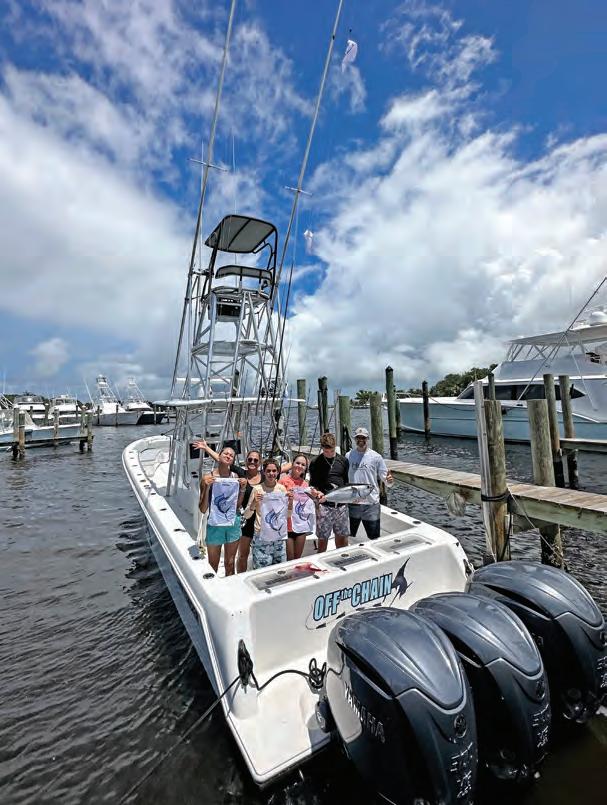
MARTIN COUNTY INSHORE NEARSHORE
Capt. Jonathan Earhart
Chaos Fishing Charters (772) 341 – 2274
www.chaosfishigcharters.com jon@chaosfishigncharters.com
is a great month for fishing on the Treasure Coast. Typically, pompano, blackdrum, sheepshead, flounder, Spanish mackerel, and redfish move into the estuary and are more actively feeding on shrimp and crabs. As water temps start to drop, fish low and slow deeper into the water column for increased hookup ratios. Snook fishing will remain steady as
MARTIN COUNTY DEEP SEA
Capt. Rocky Carbia
Safari I Deep Sea Fishing Pirates Cove Resort and Marina 4307 SE Bayview St. Port Salerno Reservations: (772) 334-4411 www.safari1deepseafishing.com
Thewinds of the Florida fall season will make their arrival along the coastal waters of Martin County during the days of November. Fresh breezes of 15 to 20 knots will accompany the first bona fide cold fronts that will begin to sweep across our peninsula and become the key component in shaping the offshore fishing playing field. “The wind is what makes the waves,” and strong velocity winds from the northwest, north and northeast will post up as frontal sessions that can “blow” for many days in a row, making for rough and choppy ocean conditions during this month. Consequently, there will be many days that will just not be fishable or will be prohibitive for small boat owners. Anglers must especially pay attention to offshore weather forecasts to identify favorable weather windows that will allow for safe offshore fishing excursions during November’s varied weather menu.
Despite the potential for choppy conditions this month, there will be favorable stretches of user-friendly days that will allow deep sea anglers to head east of the St. Lucie Inlet and fish the expansive and diverse reef ecosystem in our offshore backyard.
long as water temps don’t drop too quickly. Using live whitebaits will produce the bites.
Some mullet are still around but our annual mullet run is nearing its end.
Pompano fishing on local inshore sand flats can produce limits of pompano when drifting and casting pompano jigs with a slow twitch retrieve. Find the school then deploy anchor. Bait fishing while on anchor with clams or sand fleas works well if you have the patience.
Nearshore fishing offers some good action this month too. Fishing near our St. Lucie power plant by the warm water discharge will have good action for sharks, snapper, pompano, snook, tarpon, and the occasional redfish.
Closer to our St. Lucie Inlet has been great for Spanish mackerel
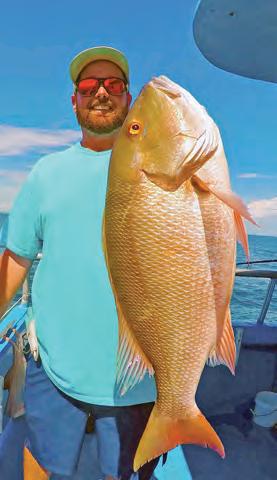
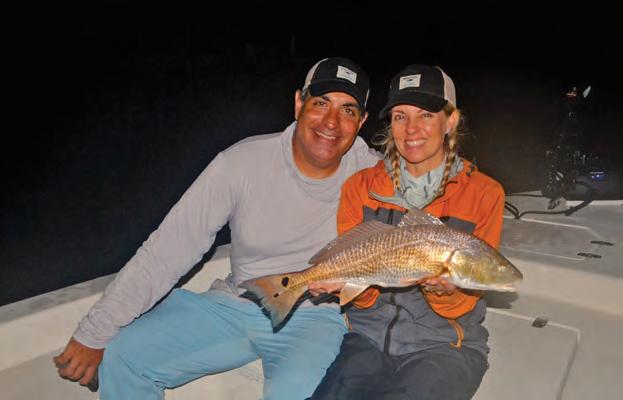
a fast retrieve for instant
Chumming with glass minnows will also bring the school of mackerel closer to the boat so that you don’t have to cast as far. Expect a few
bluefish, jacks, snapper, ladyfish, pompano, and even a stray Cobia in the mix. I suggest using a Tsunami Glass Minnow Jig 3/8th ounce. Fast retrieve and hold on! Tight lines!
Bottom fishing strategies will rule these days, as many species of snapper will have solidly populated the reefs from 50 to 150 feet of water. Lane snapper will be the most abundant, especially in near coastal depths of 50 to 60 feet of water. Lane snapper can be found around most types of “bottom” and will be best caught by deploying cut baits tight to the reef structure. Keeper to medium size mutton snapper will be found on the same reef sites and fall to similarly presented baits (use longer leaders, with baits presented just away from the reef structure to catch the larger muttons).
Grouper will also be a favorite
target species for anglers this month, as the “open season” on these bottom brawlers continues through November (except for gag grouper, which will remain closed). November’s winds will be a double-edged sword for the near coastal ocean, as they tend to create unfishable days due to heavy seas,
but these choppy and churning waves will also have the potential to help oxygenate the water column, making for a more active fish population. Watch the weather in November, and plan offshore fishing trips carefully as open weather windows will present anglers with bountiful, salty rewards.

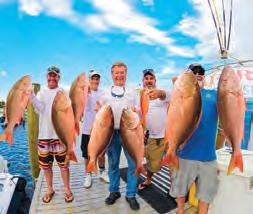
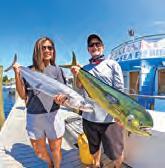


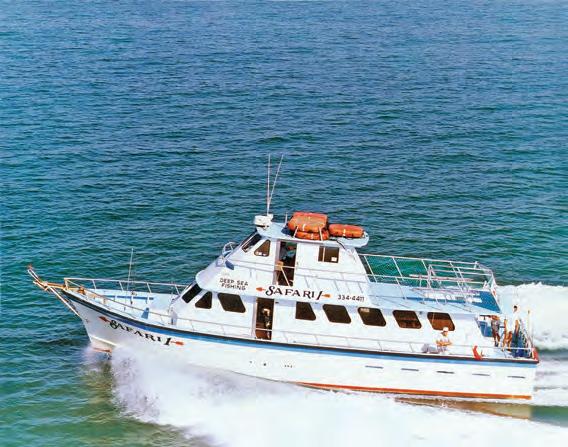


LUCIE COUNTY OFFSHORE
Capt. Bo Samuel
Pullin Drag Charters (772) 971-6661
facebook.com/Pullin-Drag-Charters catainbofishing@gmail.com
that November is here, and the hurricanes of September and October are behind us. While we can still expect northeast winds chopping up the seas, there will be many fishable days so keep an eye out for those good “weather windows” and enjoy the salty rewards of our Treasure Coast waters. The fall migration has brought an increase of sailfish, kings, and mahi to our area which means it’s a terrific time to head out our beautiful Fort Pierce Inlet for some quality fishing.
Usually, November ushers in a few much-welcomed cold fronts which push the Spanish mackerel in closer to shore and just outside the inlet. Fishing for Spanish mackerel on the windier days when you want to stay closer to shore will typically offer

a successful fishin’ mission. Diving birds are a great sign that bait is in the area and Spanish mack like to be on the surface eating that bait. These schooling fish are aggressive feeders and will actively jump out of the water while feeding. Hooking one promises a fun fight for anglers of all ages.
Youth anglers will really get stoked to reel in fish after fish so take a kid fishing! There is no closed season on Spanish mackerel and the minimum size limit is 12” to the fork.
Slow trolling over the 50–90-foot reefs have been producing some
nice king mackerel and pretty mahi, plus decent cobia as well. Look for migrating rays and schools of sharks to increase your cobia hook-ups as cobia like to swim along with them. It’s always recommended to keep a pitch rod ready for any curious cobia that pop up. If you’re targeting mahi, also known as dolphinfish, watch for weed lines, color and/or temperature changes, diving birds, and flying fish and choose either naked or skirted ballyhoo. Be prepared for possible sailfish action, too, as they follow the same bait. The fast growing and fast
swimming mahi-mahi must be 20” to the fork.
Bottom fishing is a top strategy this month especially for big snapper congregating on the 50–100-foot reefs. Nice size muttons should be chewing live and cut bait. Lanes and mangroves will be equally hungry. Grouper hook-ups are being reported, as well. I know many anglers who claim grouper as their favorite target species due to their exciting battles and their excellent table fare. A fresh grouper sandwich is definitely a contender for favorite seafood meal.
This is the time of year when we all have something to be thankful for on the Treasure Coast with family and fishing at the top of my list. Big thanks to everyone who booked it and hooked it with us this year! Remember to “Shop Small” this season and visit your local bait and tackle shops like DeBrooks Fishing Corner and my home base, the historic Little Jim Bait & Tackle. Your continued support is greatly appreciated.
The word on the water is that gift certificates for charter fishing is a top wish for salty anglers and Pullin Drag has ‘em! Wishing all our readers a very Happy Thanksgiving and feeling grateful for the fried snapper and smoked fish dip that will sit beside the turkey and pumpkin pie on our table. Always thankful to be Pullin Drag!
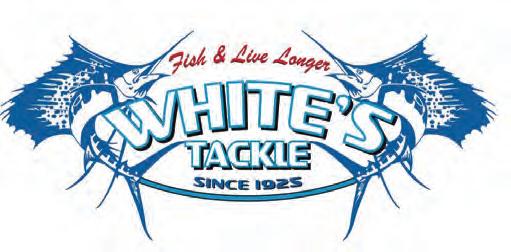

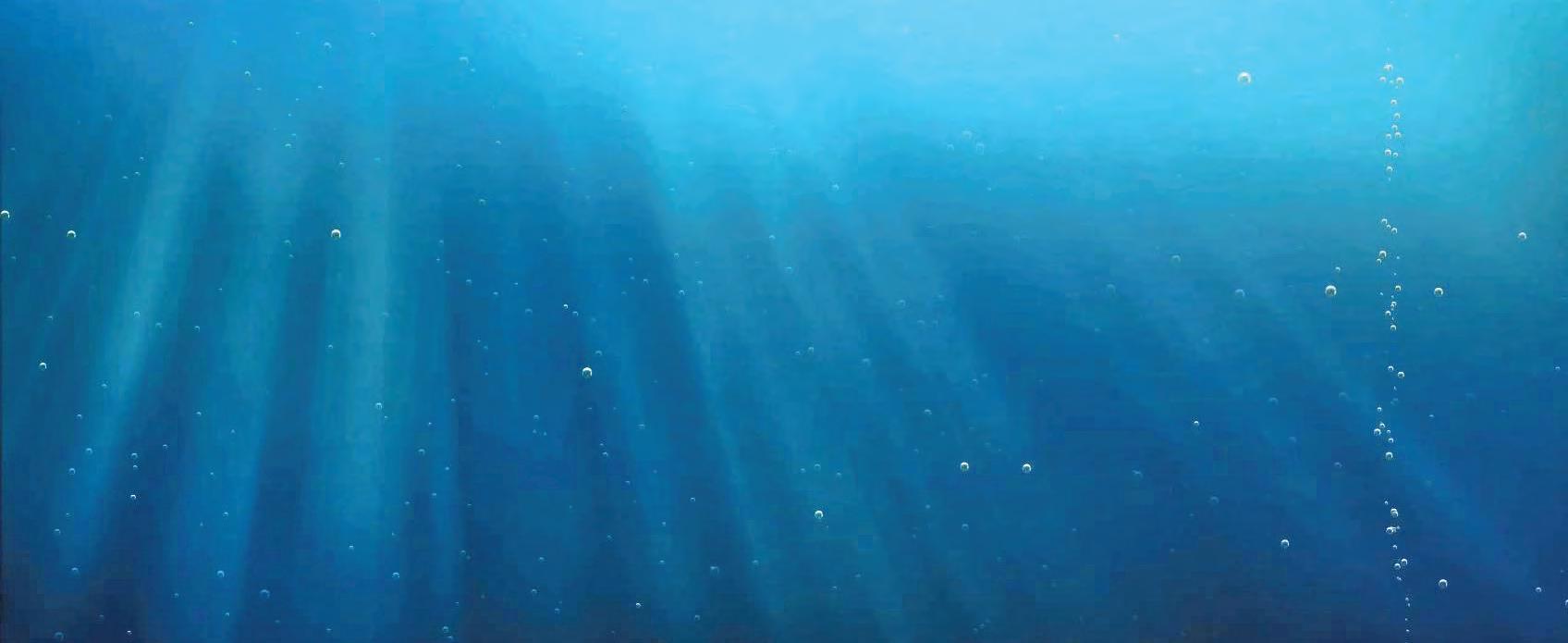


St. Lucie Flats Fishing Charters (609) 820-6257 www.stlucieflatsfishing.com
Wow! The tornadic activity that came from Hurricane Milton through our area was something else. Many of the Treasure Coast residents had their lives rearranged in the blink of an eye. My thoughts and prayers go out to everyone who was adversely affected by the storm.
I personally am looking forward to our winter fishing. The bulk of the mullet run will be coming to an end as we transition through the month of November. It is time to start switching gears and targeting our winter species. The water temps will cool, there is no need to be starting your days at 5 a.m., and you have great opportunities to catch fish throughout the whole day.
The sheepshead, pompano, and Spanish mackerel will be making a good showing through November. North Beach to Wabasso will have schools of Spanish lingering around when the conditions allow you to
get out on the beach. Look for small birds, fish breaking the water, and pay attention to your machine. If you don’t see any surface activity there is a good chance the fish will be a little farther down in the water column. Chumming with glass minnows, and fishing cut sardines is a great way to target the bigger fish when they’re not on the surface. When the fish are up, I like trolling or casting Gulfstream glass minnow jigs. You can control their depth with your retrieve speed, and they cast great into the wind. I use 7’ light action Crowder rods with a 3000-size reel while fishing for mackerel.
Pompano will make a good push this month as well. Look for them scattered through the Treasure Coast’s beaches and all throughout the river. Sandfleas, Doc’s Goofy Jigs, and Fishbite tipped jigs are all good ways to invite a pompano home for dinner. These hard fighting fish are an absolute blast to catch and are even better on the half shell with a fresh garlic butter.
November is a great month to fish with the cooler air and water temperatures. There is a little more tactics in the daily plans as we deal with the winds from the cool
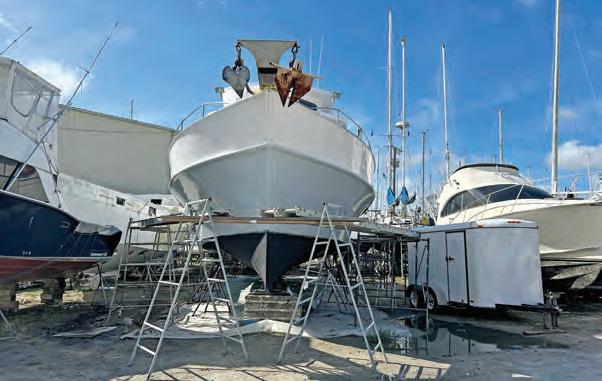
Capt. Scotty Gold
Miss Fort Pierce Fishing (772) 766-0191
www.fortpiercefishing.com
As October exits, hopefully so will the storms and the wind. It’s been a terrible month for fishing so we will look forward to November delivering better opportunities. The fish should be moving around as the water cools off to the deeper depths of the reefs. Look for the mutton and mangoes to start to get a little sluggish. You’ll also see the lane snappers and triggerfish school
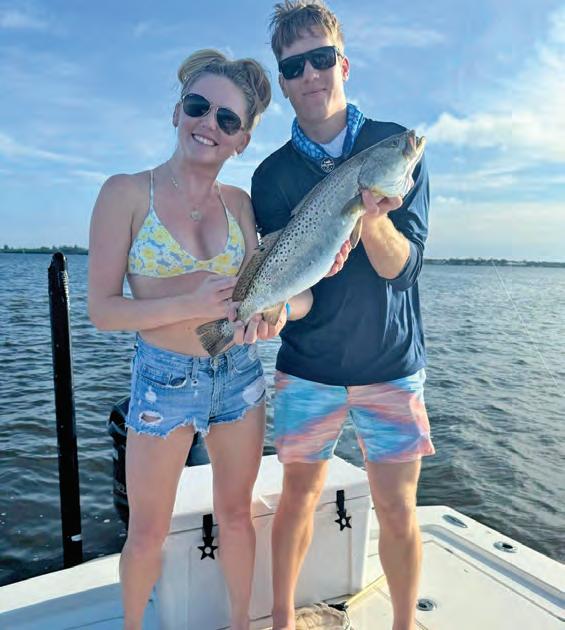
fronts. The benefit of our section of Treasure Coast is there is always somewhere to hide, if necessary, and be able to catch some fish
We look forward to meeting you all on board the Miss Fort Pierce!

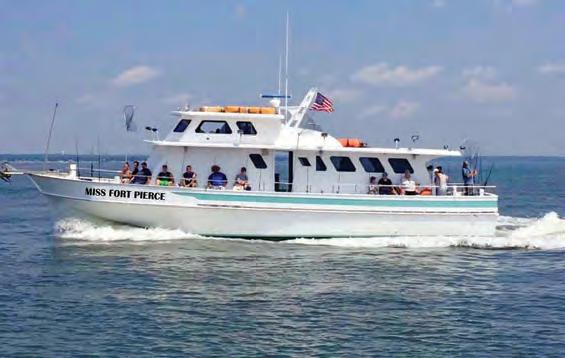
around the reef as they finish their migration down to the southern Atlantic and Gulf. Also look in the deeper reefs over 140 feet for a chance to catch a grouper.
Here on the Miss Fort Pierce the crew has been diligently working hard with a complete list of full renovations of the boat to include a new cabin interior, new bathrooms, and toilets, as well as a brand-new paint job and new electronics. It’s all about the details and that takes time.
We will be back up and fully running on our seven day all day schedule starting November 1. Come see the jewel of the Treasure Coast. We look forward to seeing you on board!







Chris Beachwalker Sharp
(772) 263-0118
beachwalkerfish@gmail.com
BEACH: November brings big changes on the beach. Water temperatures are cooler and that means species change. Top fish on the beach will be the jack crevalle and bluefish. Jack crevalle fight hard but are very easy to catch. You can use top water plugs to get the bite on top. You can also use spoons, plugs, cut bait and even live bait. These fish will be up to 40 pounds. Bluefish will be plentiful. Using a spoon lure is my top choice. You can use cut bait like mullet or lady fish to get a bite. Sharks will be plentiful along with the first push of pompano with cold fronts moving in. Look for northeast winds and cold fronts to really get the fish to bite.
BRIDGES: Snook will hunker down for the winter season and this is your

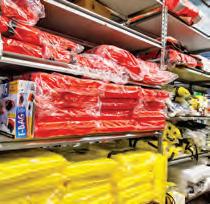
chance to get fish off catwalks, night being best time. Snook will be lazy but a mullet head or live mullet on the bottom will work. For artificial, I like big swimbaits fished slow near the shadow lines or bunkers. Drum will be eating, with fiddler crabs being top of list. Cut bait will also work. Pompano jigging on the Stuart causeway or Jensen Beach causeway will be hot. Look for cold fronts. Bluefish will be around too, so get out the cut mullet.
Bear Point, Herman’s Bay, and Little Mud Creek are the go-to spots for wading because they have grass. Top fish on the flats will be trout and redfish. Topwater plugs at first light like the Yo-Zuri Hydro Pencil, will work great casting along the mangroves. Popping cork with live shrimp will work well. Fish the tide changes. At hightide, fish closer to the mangroves. Lowtide out on the drop offs. Blue and jack crevalle will be mixed in and they are always fun to catch on light tackle. On the west side of the river from Jensen causeway to Fort Pierce, fish along the docks on Indian River Drive for trout, snook, and redfish.
Have a happy Thanksgiving and tight lines!
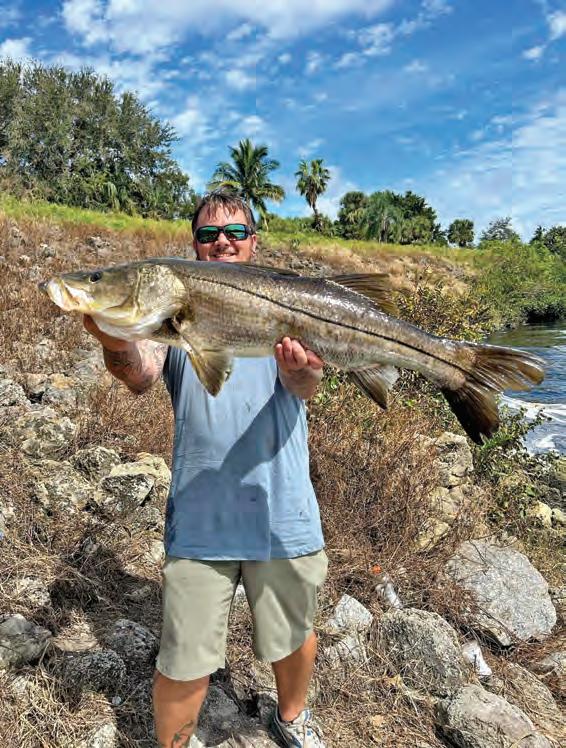












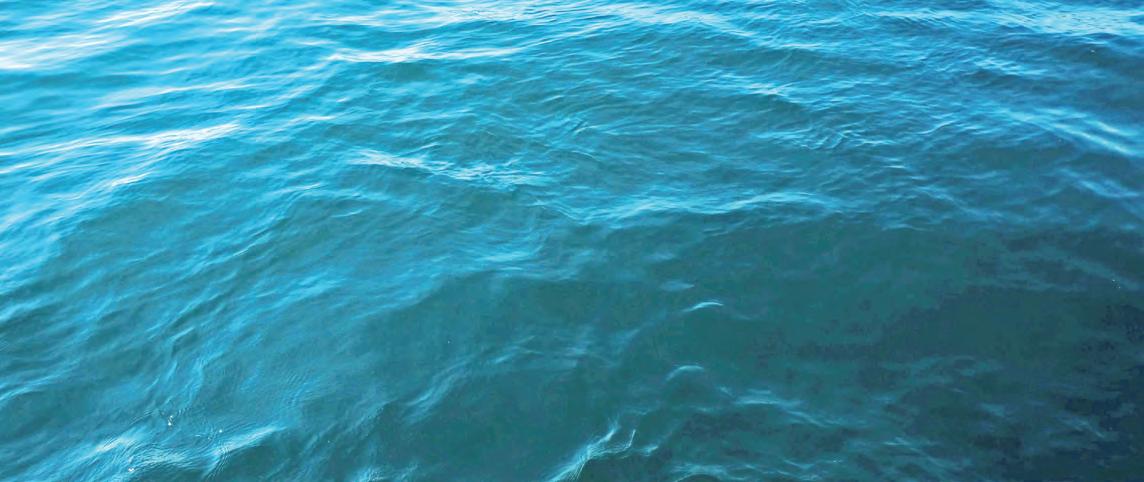


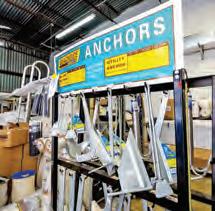


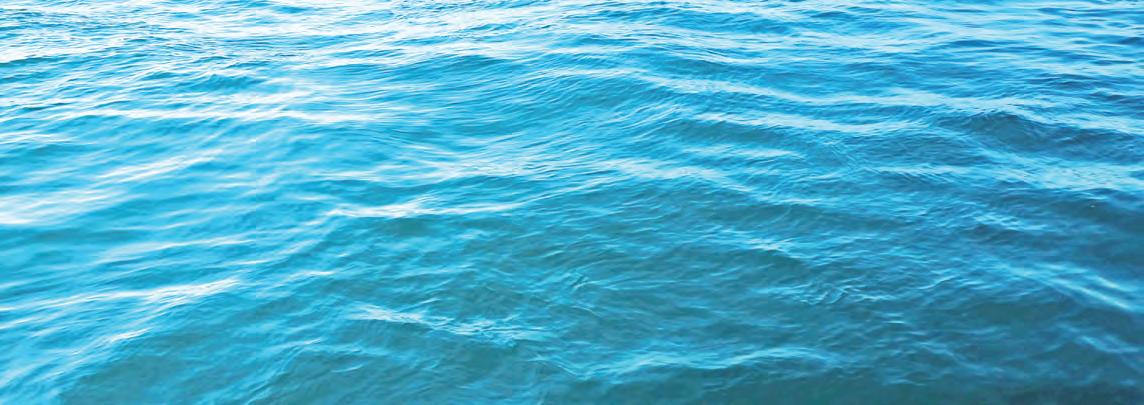
Big Easy Fishing Charters (772) 538 - 1072 captwildey@bellsouth.net www.bigeasyfishingcharters.com
If the cold fronts start pushing down like some Novembers, we will see our usual push of Spanish mackerel from the beach out to 60’ of water. Clark spoons and small feather jigs work great, always watch the sky for birds as well as for surface action since they’ll be feeding as they move south.
Cooler water should move some fish into the 60’ reefs. Live bait slow trolled on the surface around structure should produce some king mackerel as well as a few cobia. It’s good to keep a spinning rod with a cobia jig ready just in case. Cobia are curious creatures that will often pop up when you stop over a piece of structure. The 80- and 90-foot reef should produce some good
catches of lane snapper, trigger fish, and mutton snapper on the bottom. Also, good chance for kings and cobia. I don’t expect to see the big cold fronts we’ll see in December and January but just a slight cool down will change our water temps enough to move some fish.
Offshore we will start to see some sailfish action, a few black fin tuna, occasional wahoo or dolphin around rips, temperature changes and weed lines. This will be good news for anyone that got new trolling gear and is itching to drag some ballyhoo.
The bottom structure from 160’ to 260’ should have good numbers of amberjack. There always a good backup if the trolling bite is slow is to catch some live baits, threadfins, blue runners or grunts to drop a big rod down for an amberjack. Also known as Reef Donkey!
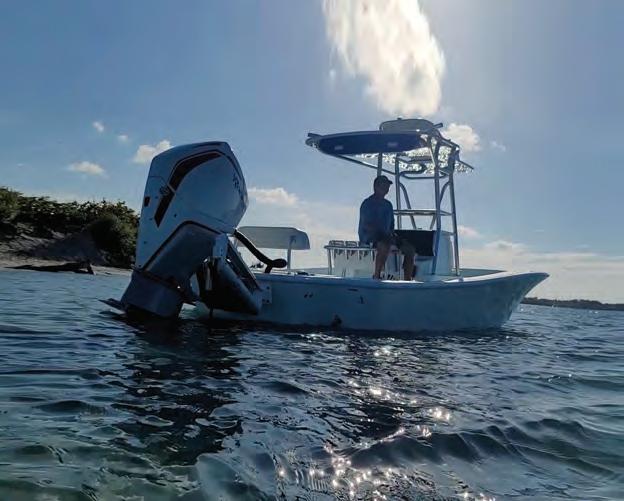
It’ been an amazing year for good weather. I’m hoping November gives us more of the same. As always support your local tackle shops, that’s where we buy our bait and tackle. They typically know what’s biting and what we’re catching it on.
Fish on, gotta go!
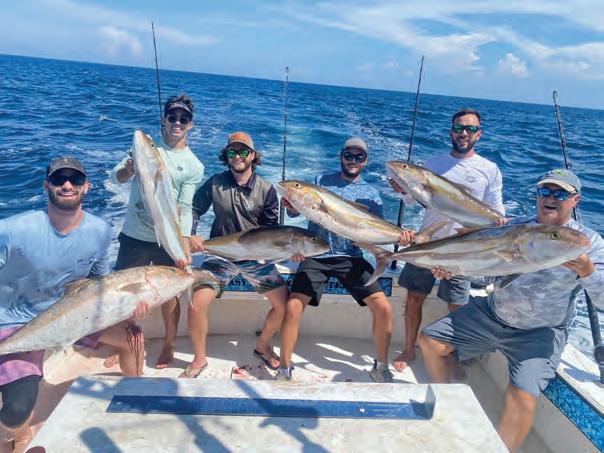






Brian Nelli
Pushin’ Water Kayak Charters (772) 201-5899
Brian@tckayakfishing.com www.tckayakfishing.com
OFFSHORE: November has traditionally brought me some good wahoo and mahi catches. We typically get good numbers more than size this time of year on the mahi. If you can still find mullet around, I love using them for mahi drifting 90-150 foot of water. I like to bump up my bait size for the wahoo and slow troll goggle eyes and blue runners 90250 foot of water. Try trolling one bait up top on the surface and one 40-80 feet below the surface using a downrigger of rubber band and egg weight attached to your line. The
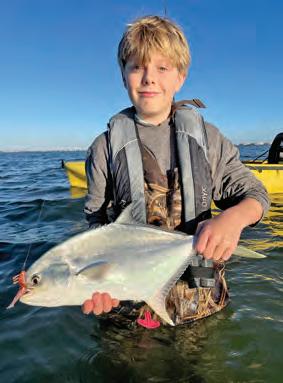
egg weight will break away when bait it hit and you are free to fight the fish.
INSHORE: November will be the start of the winter species push. Look for pompano, Spanish mackerel and bluefish to start to show up along the beach with our first few cold fronts. Fish for pompano along channel edges of your favorite inlet. Pompano jigs, D.O.A. Lures 2.75” Shrimp and a good ole bucktail jig are a few of my favorite lures. A favorite place

to kayak fish for these fish is the Intracoastal north of Jupiter Inlet east of Jonathan Dickenson State Park.
FRESHWATER: Peacock bass and clown knifefish will be chewing this month. Yo-Zuri prop baits will work well for peacock along shallow edges. Try 20-pound leader and a 2/0 circle hook casting in and
around structure and weed lines to get onto a few clowns with finger mullet and shiners. Look to fish mid water column and below by adding a pinch weight to your leader and get that bait in their face.
Check out Pushin’ Water Kayak Charters on Facebook, Instagram, YouTube and TikTok for all the latest adventures my clients and I get into.
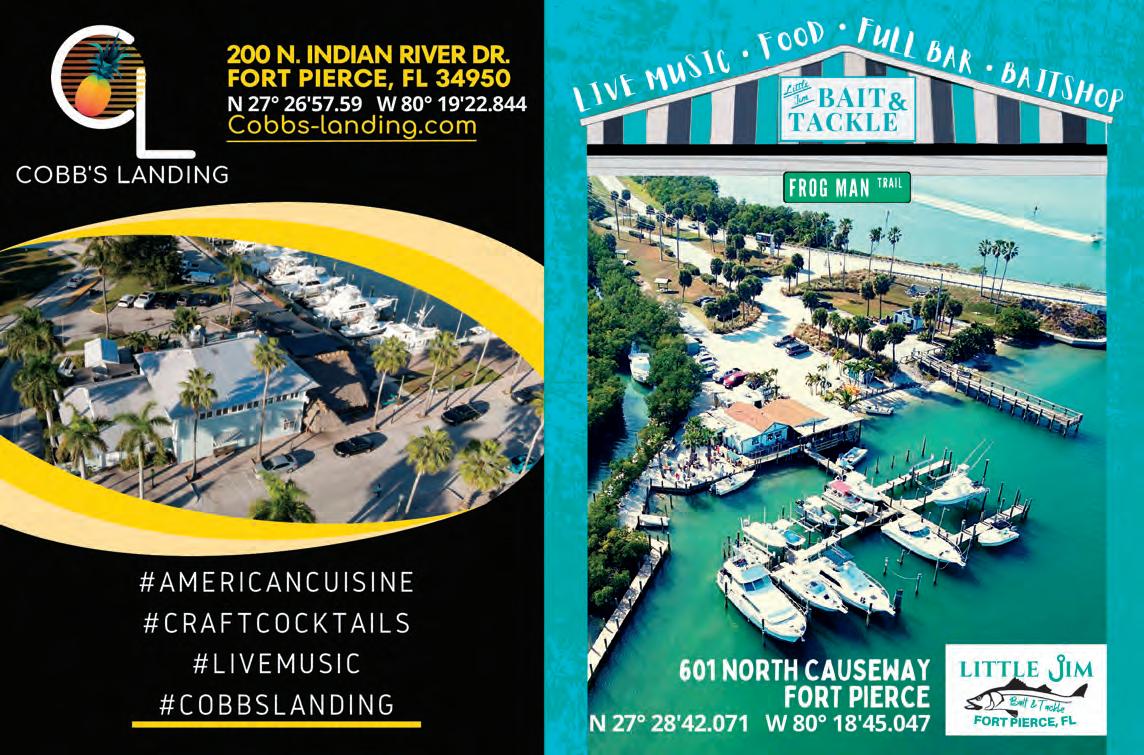
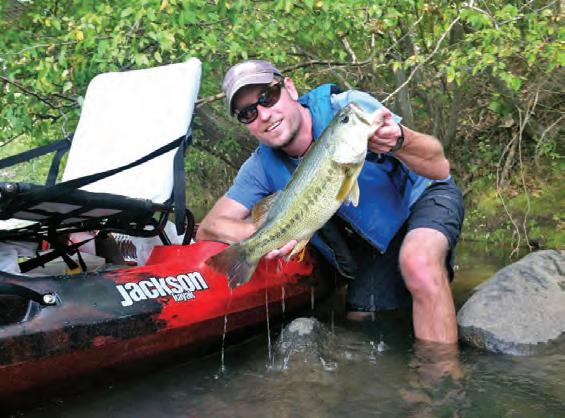
By Henry Jackson
Many kayak fishermen enter the sport as fishermen, not kayakers. Therefore, fundamental paddling skills are typically relatively low. Through necessity and self-discovery, most of us learn how to make a kayak move in the direction needed. But many bad habits are developed in the process, and bad habits can put stress on a paddler’s shoulders. Taking the time to learn correct paddling strokes will increase time on the water and decrease the chance for injury.
The forward stroke is the most basic of all paddle strokes, and it’s usually the first one beginning paddlers figure out on their own. It’s also the most important stroke to perform correctly because you’ll use it 90 percent of the time. The key to a correct forward stroke is to engage the large muscles of the core and use them to power the stroke instead of our arms and shoulders. Performed correctly, the stroke is more efficient and allows you to paddle farther with less discomfort.
Engage core muscles by rotating your torso as you reach forward to plant the blade in the water. As the blade is drawn toward you, unwind your torso to power the stroke, keeping your arms relatively straight. A great method for learning the concept is to hold the paddle out in front of you, arms completely straight, and paddle only by rotating your torso.
The reverse stroke is another basic stroke that is learned relatively early by new paddlers. This stroke can put extremely high levels of stress on the shoulders when done incorrectly. To begin the reverse stroke, fully rotate your torso and plant the paddle blade at the stern of the boat. Then unwind your torso, powering the stroke, and bring the blade out of the water when it is even with your hips. It will take practice, but eventually you should be rotating far enough that the paddle shaft is horizontal with the side of the kayak, and if you were to drop the paddle it would land in the water without hitting the kayak.
The draw stroke is one that, now that I’ve learned it, I cannot paddle without. The draw is used to move the kayak sideways. To perform the draw, rotate your torso until you are facing sideways in the direction you want to travel. Reach out, turn the paddle blade horizontal with the kayak, plant it in the water and draw it toward you. To recover, turn the blade 90 degrees and slide it through the water away from the kayak. Rotate it horizontally, and draw it back toward you. Repeat as necessary.
Mastering the correct versions of these strokes will greatly improve your paddling experience and increase your time on the water. Youtube has several excellent channels that illustrate proper stroke techniques. One of my favorite channels is SeaKayakingTV, and there are several others that are top notch.
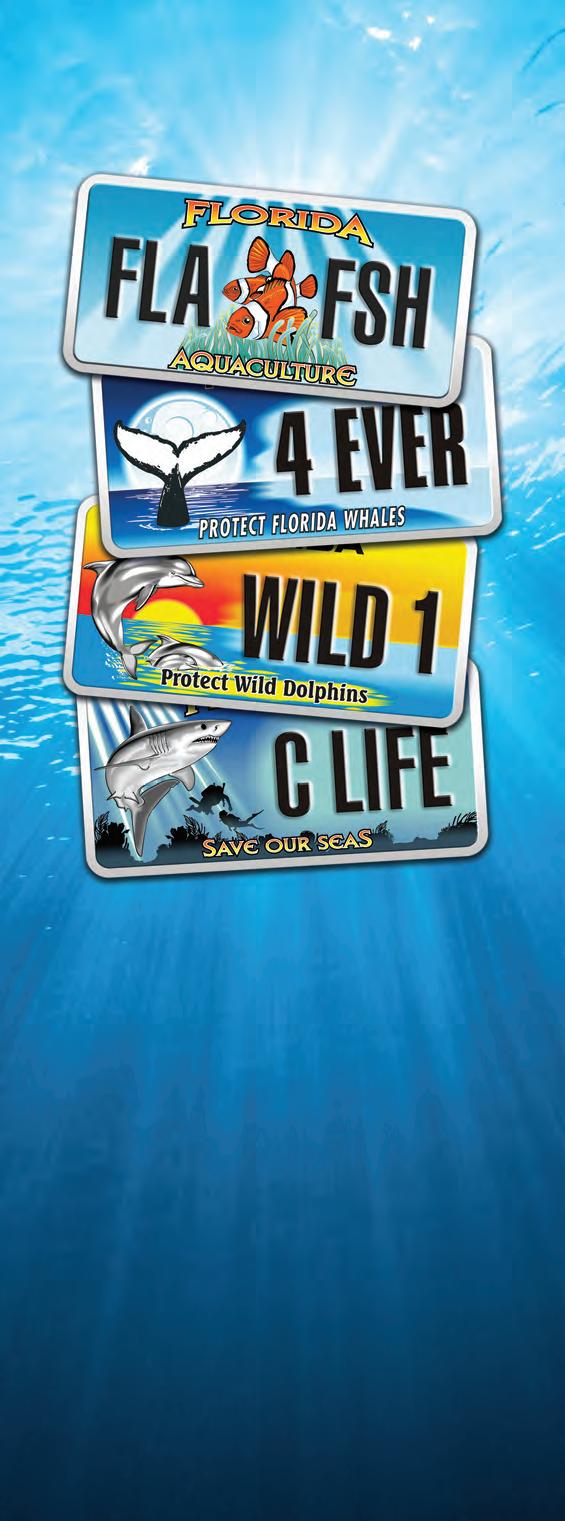
Did you know you can help our oceans and estuaries?
By purchasing one of these Specialty License Plates, you can directly support critical scientific research, outreach and education in Florida!

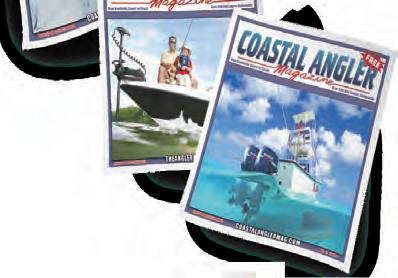
• 4 (6-ounce) Florida flounder fillets
• 3 cups Florida spinach
• 3 lemons, 2 sliced and 1 juiced
• 1 cup breadcrumbs

don’t just reach anglers. Our readers enjoy all of the outdoors and a variety of recreational activities.
• 1/2 cup Parmesan cheese, grated
• 2 tablespoons butter, melted
• 1 tablespoon oil, for cooking

• Sea salt and fresh ground pepper, to taste





9 8 7 6 5 4




Reach an exclusive demographic: 90% male, 80% home owners, 35% college degree, $82K annual income.
Geo-Target your ad to reach: 10,000+ locally, 180,000+ throughout Florida, or over 280,000 nationally.
A FREE publication means new readers and “fresh eyes” each month that see your ad.
Local editorials from the area’s most experienced fishing guides, charter captains, and writers.
A rate schedule that offers the lowest cost per thousand impressions in the industry.
For the small business a regional or national ad can be a life-changing event.
Your ad will also appear in Coastal Angler Magazine’s E-magazine, marketing your business on the Internet.
We are the largest Free outdoor publication in the US, Puerto Rico and the US Virgin Islands with over 280,000 readers each month. You are not buying an ad, but investing in your business with Coastal Angler Magazine.
Preheat oven to 400 degrees. Thinly slice 2 lemons and place in the bottom of an oiled oven-proof dish and set aside. Preheat a sauté pan and add the olive oil. Sauté spinach for 2 minutes (until wilted) and season with salt and pepper. Remove from heat and add the lemon juice, breadcrumbs and Parmesan cheese. Mix to combine. Season both sides of the flounder fillets with salt and pepper and spread an even amount of the spinach mixture on each fillet. Carefully roll each fillet and place on top of the lemon slices in the prepared dish. Season with salt, pepper, melted butter and top with the remaining breadcrumbs. Bake for 15 to 20 minutes or until cooked thoroughly. Remove from oven and sprinkle with lemon juice.
SOURCE: www.followfreshfromflorida.com






By Jim Moir, Indian Riverkeeper Executive Director
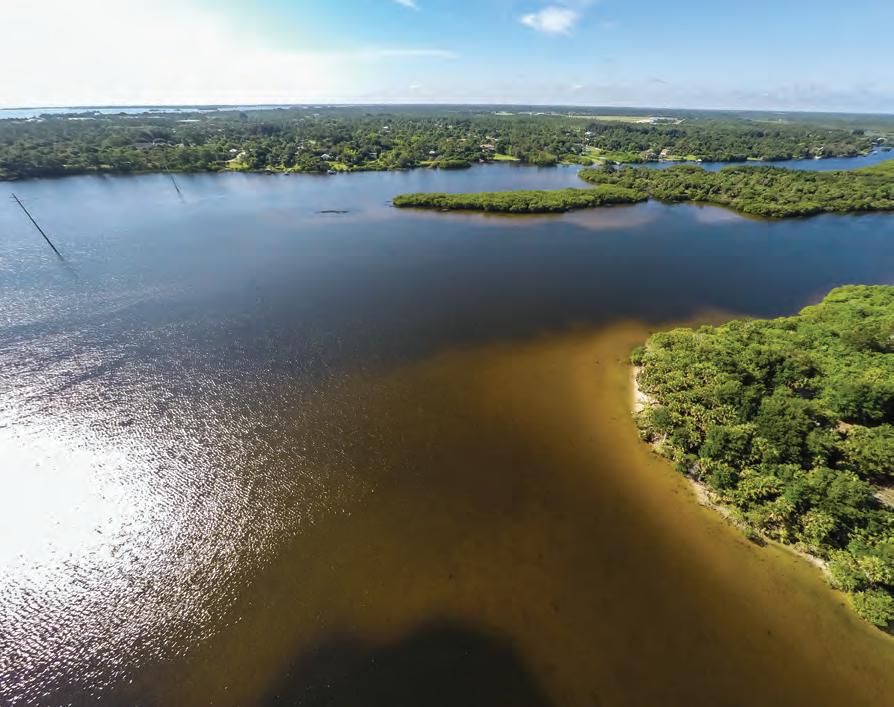
Late summer and fall have always been somewhat anxious times for Floridians. We tend to be a bit obsessive about watching the tropics forecast and paying particular attention to the lowpressure systems, where they develop and their projected paths. One can often hear comments like we got hit last year so we’re not due for another one, or those unlucky guys on the other coast are in for a soaking. This year Florida got whacked.
I have a great deal of sympathy for those families that are suffering casualties of this hurricane season. The flooding and tornadoes were of epic proportion. The damage seems to be oddly dispersed in unexpected locations. It seems that people and property were harmed in unusual ways this year. It also seems that the storms that developed were of uncommon origin and of particularly malevolent character, out of synch with the names that they had been given. These storms feel very ominous. The ocean is hotter than ever, and the season isn’t over. Breathe?
For me, and the Indian River Lagoon in my back yard, were more affected by hurricane Milton than Helene. Before Milton’s eye wall even reached Florida’s west coast we had an outbreak of tornadoes. In my community, some touched down a block from my house, other areas were much worse off including loss of life. For me this was an unusual
hurricane, in that it was a freshwater storm, consisting of rain and winds mostly from the south and west. It did not whip up spume from the Atlantic nor did we suffer storm surge in Stuart.
In Florida much money and effort have been spent on resiliency planning and thinking about” sea level rise”. These are important considerations, but there are many facets of climate change that must be considered above and beyond the effects of sea level rise.
We must include rising heat in our resiliency planning. Not only does it have major effects on our health, comfort, energy consumption, biological diversity, but it drives our weather. These rapidly (explosively) intensifying tropical cyclones are becoming normal and maybe the new paradigm for hurricanes in the future. The ocean surface temperatures are higher than ever in thousands of years.
We have some reconning to do. How many hurricanes does it take to change our mind, and what does it cost to change our attitudes and behavior? Buffering urban developments with large wild places, provides many protections, distance, drainage and recharge for stormwater, it also provides natural services and refuge for wildlife. In Marine Protected Areas that have had some restoration there has been a demonstrated a 10% improvement for fisheries, over areas that have not
been protected, over a short period of time, and with similar conditions. That does not take into consideration

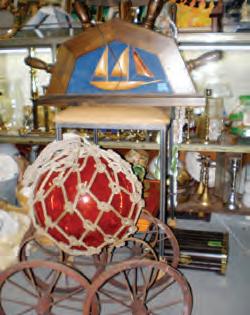
the other natural services that these preserves provide beyond healthy fish habitat.
We may not be able to tame hurricanes in the near term, but we can change the way we interact with nature. We must curb our greenhouse gas emissions. We can develop natural buffers between our urban areas and the ocean. Globally we must also examine the dam and dyke/ reservoir water control structures and their operations. More natural storm water treatment areas are far more economical than structures that invariably fail catastrophically.
The Indian River Lagoon and the near shore reef are areas that should immediately be considered for Marine Protected Area status. This region can provide those important protective natural services that urbanized east central Florida needs. The Indian River Lagoon and the near shore reef should be a national park and be given the protections and respect that would entail.
If you would like to learn more about the benefits of supporting Indian Riverkeeper, email Executive Director Jim Moir at IndianRiverKeeperFL@gmail.com or call (772) 341-4953.



By Robert Wiggers
For fish that are released, their survival often depends on the rod and reel used to catch them. Fish naturally don’t want to have a hook in their mouth, attached to a line, being pulled in a direction they don’t want to go. So, like any animal, they resist in an attempt to free themselves. The longer they fight, the more exhausted they become, and in some instances they deplete every amount of available energy in an effort to escape.
The battle is over and the angler has won. Unfortunately, when it comes time to release the fish, it’s too exhausted to swim away on its own. Even if it is able to swim away, it certainly doesn’t have the energy to avoid predators that may be lurking around waiting for an easy meal.
Hooking and fighting a fish is an exhilarating experience. There was a time when it was considered to be more “sporting” to catch a large fish on very light tackle. A long fight requires a degree of skill and finesse in order to successfully bring a large fish to the boat. Anglers are recognized for such achievements through acknowledgement in the record books.

However, the majority of recreational anglers don’t go fishing with the sole intent of trying to break a line-class record for a specific species. We go fishing simply to catch fish. Some anglers want something for the table, while others just want the satisfaction of catch and release. Regardless of reason, we usually





choose a rod and reel that gives us the best chance of successfully landing the species we are targeting. Most anglers wouldn’t use freshwater bass tackle if they were trying to catch a billfish.
The rod and reel you choose to use when fishing for a particular species should be carefully considered when practicing catch and release. Nowadays, the options for rod and reels are endless. Rods come in all lengths and are designed with different actions ranging from ultra light to heavy. Reels also range in size to match the rod, but have different gear ratios that allow an angler to retrieve the bait at a faster pace with less effort. Each combination performs differently. For this reason, many anglers carry a number of rods with them on any given trip.
While it may be more fun to use a light rod and reel for catching a big fish, it’s simply not good for the fish or its chances of survival after being released. Studies have even shown that mortality of released fish can happen several hours after being released.
There are always instances when anglers unexpectedly hook an exceptionally large fish on light tackle. But if you know beforehand that you are going to fish specifically for large fish, be sure to use appropriate tackle that reduces the fight time. I don’t know of any conservation-minded angler that wouldn’t be heartbroken to see a large fish float away knowing the fish was potentially older than they were or that they just killed a spawning fish that could contribute more to the population.







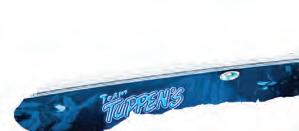




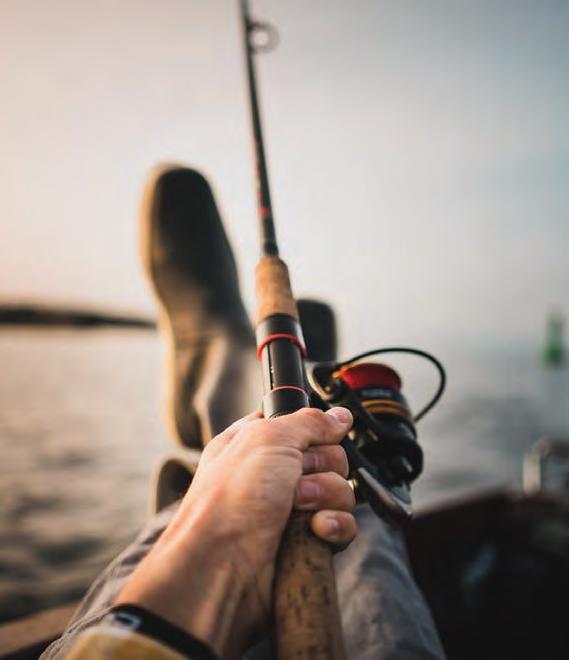

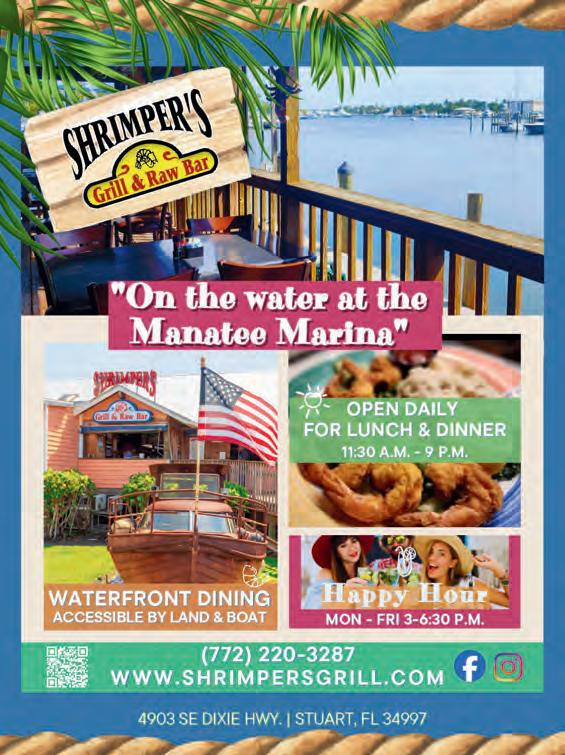




Hurricane Milton brought a lot of trash to area beaches. Just one crew of hundreds that volunteered to make the beaches clean and safe. Thank you, Team Heather!
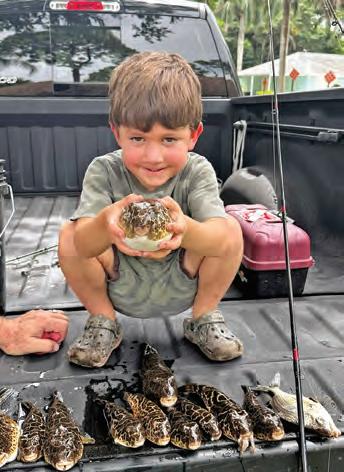

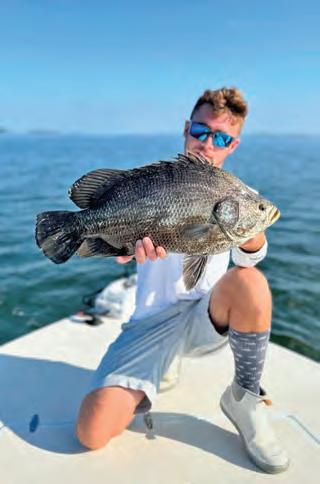





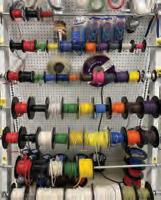

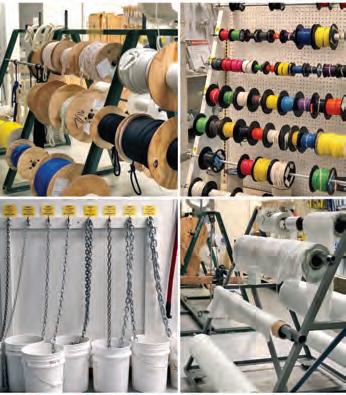





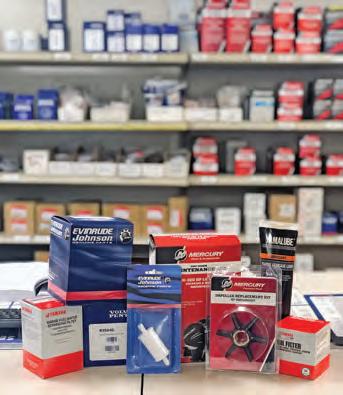
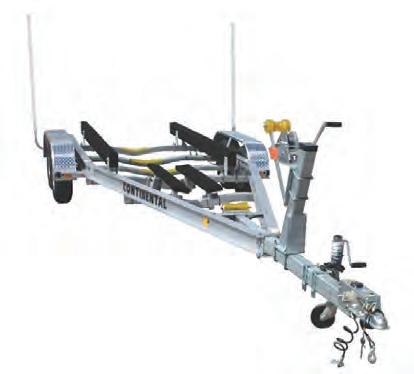








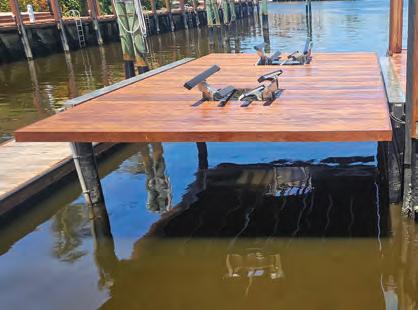
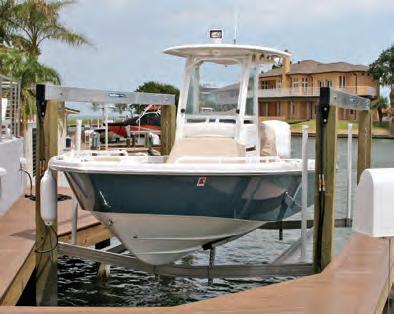


ShoreStation hydraulic boat lifts are a reliable choice for coastal residents and boating enthusiasts alike. Their strong construction, made with corrosion-resistant materials, allows them to withstand harsh environmental conditions, including sun, storms, and saltwater damage. ShoreStation provides a steadfast solution for protecting waterfront investments, ofering peace of mind to owners in the Sunshine State.
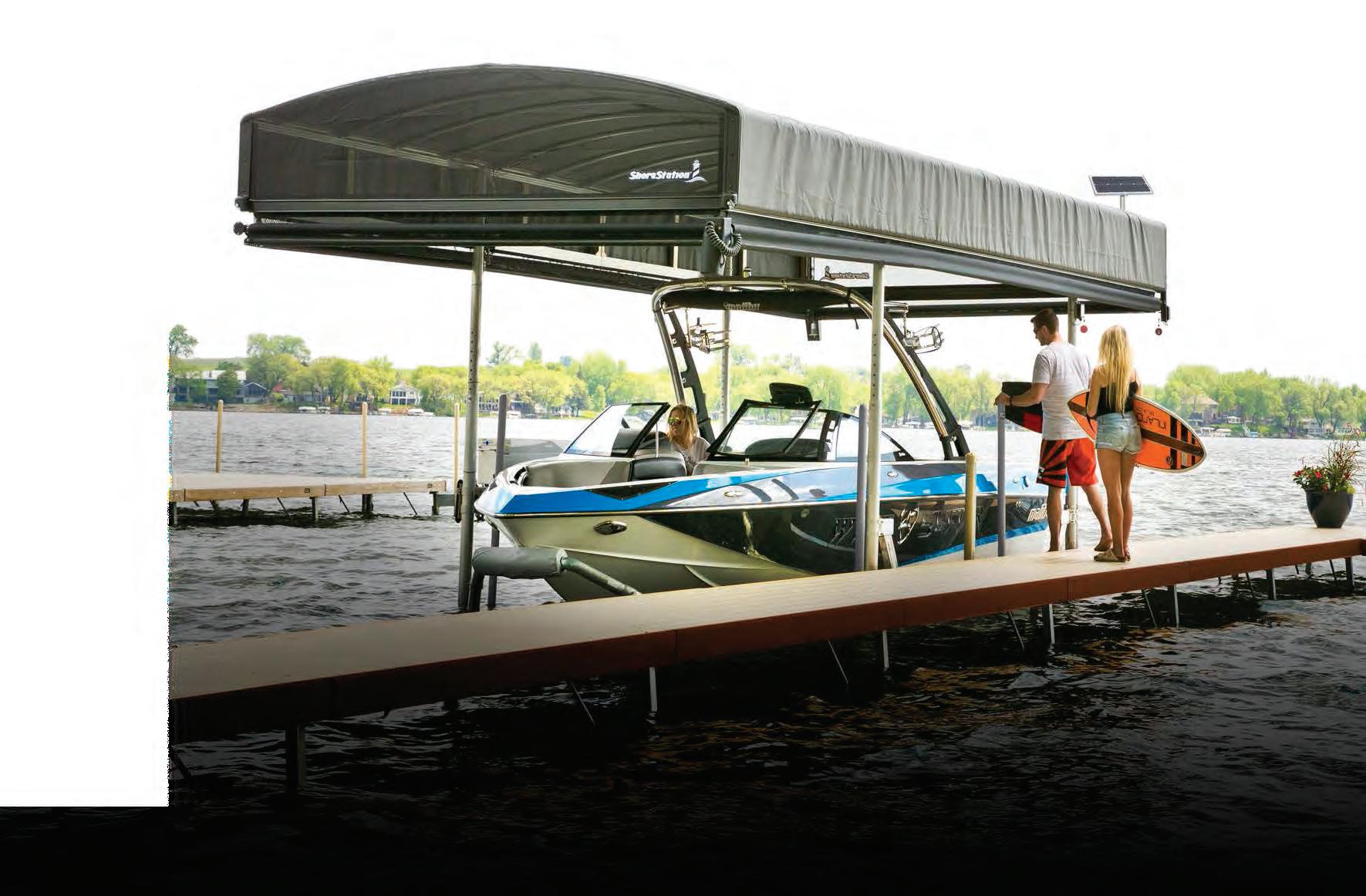

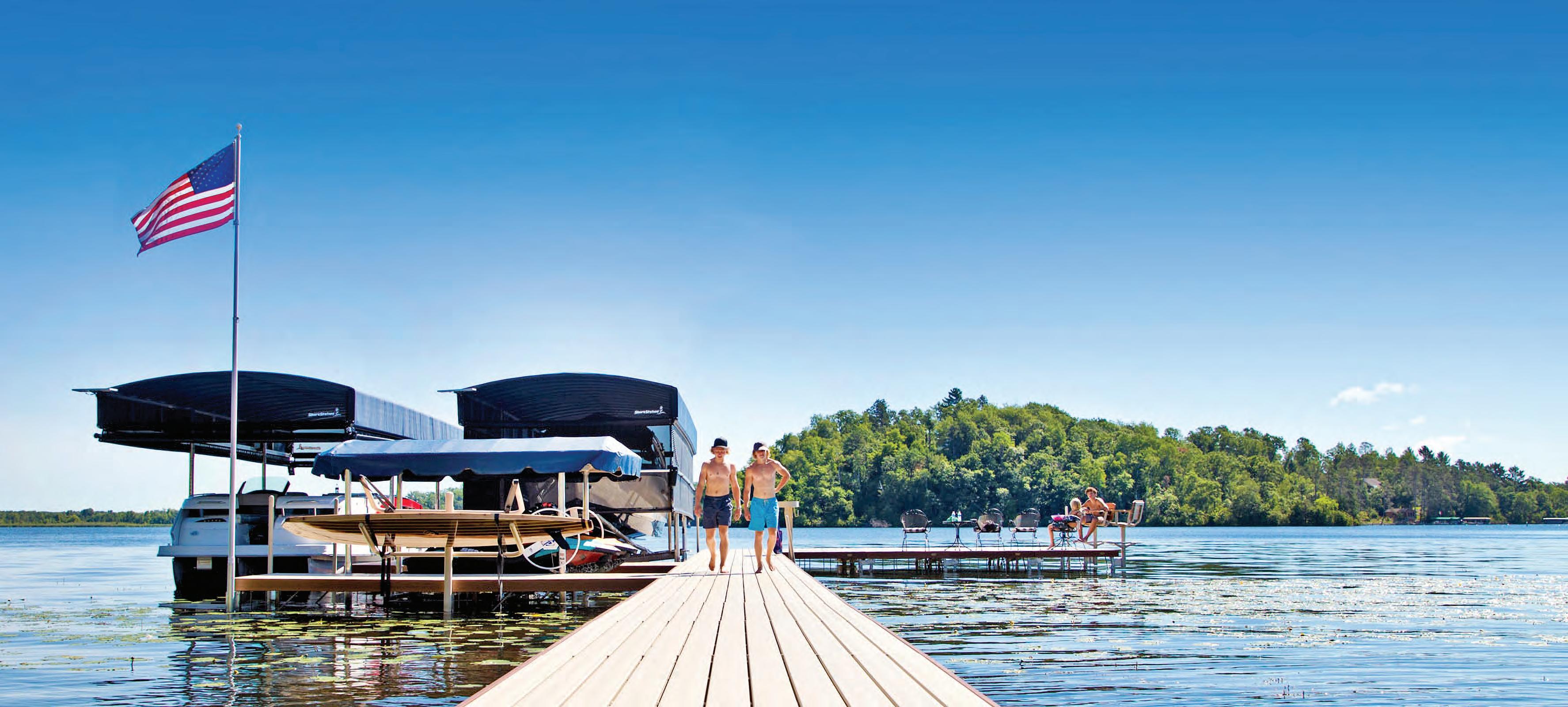



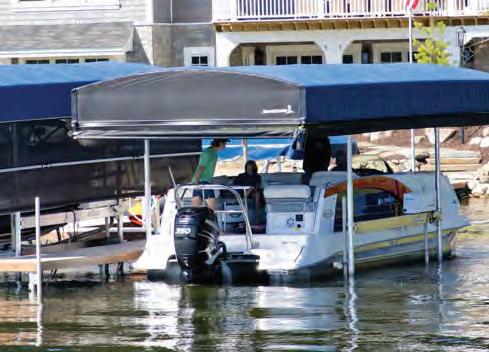

Equipped with exceptional weather resistant fabric and breathable SunTex 80 woven mesh ends for maximum protection and durability,

Made from the highest quality materials, our innovative hydraulic boat lift is one of the fastest and safest lifts on the market today. When you have a hydraulic lift, there’s no need to worry about wind and waves getting in your way. This lift will give you confdence to safely land and secure your boat in less-than-ideal conditions.
Never miss another moment on the water. Power your lift with clean, free solar power. Our speedy 20 watt charger features solar regulator drainage protection, saving your battery from permanent damage caused by overcharging.




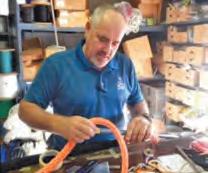




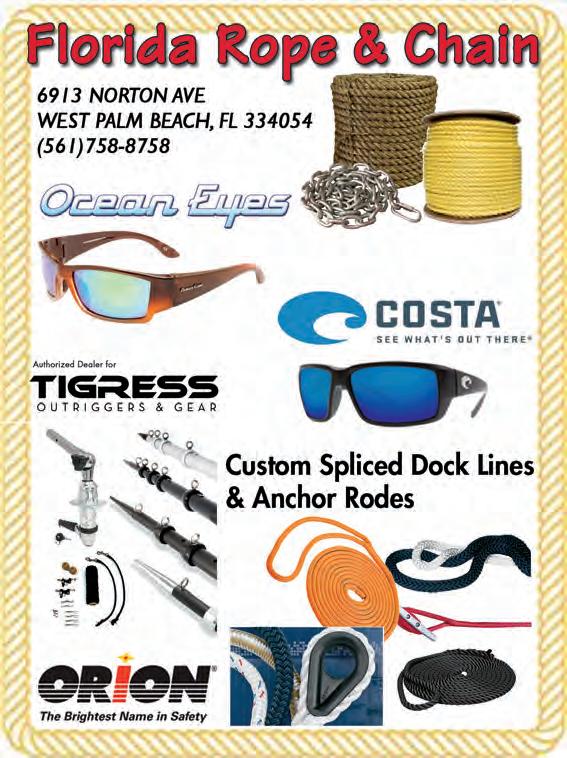
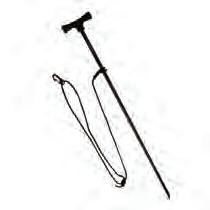








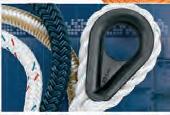
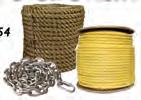
By Dr. Sal Benezo


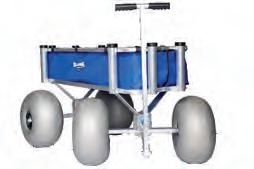


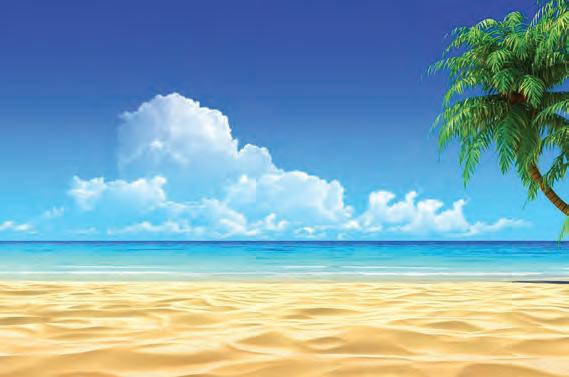

During a hurricane, fsh experience dramatic changes in their environment that can afect their behavior, habitat, and survival. As the atmospheric pressure drops with an approaching hurricane, the water pressure at diferent depths also changes. Fish have swim bladders that help regulate buoyancy, and the rapid changes in pressure can afect how they swim and maintain their depth. Some fsh may dive deeper to avoid the surface turmoil.
Hurricanes churn up sediment from the seabed, making the water murkier. Tis can reduce visibility, afecting how fsh fnd food and avoid predators. In coastal areas, this turbidity can also carry pollutants and toxins from land runof, negatively impacting the water quality.
Hurricanes generate powerful underwater currents and massive waves. Many fsh seek refuge in deeper waters, coral reefs, or underwater structures to avoid being swept away. Shallow-water fsh may struggle more to fnd shelter from the turbulence, which could lead to displacement or death.
Hurricanes ofen bring a rapid infux of fresh water from rain and runof, lowering the salinity of coastal waters. Some species, especially those adapted to certain salinity levels, may be stressed or forced to move to more stable areas. Additionally, the mixing of ocean layers can lead to changes in water temperature, which can afect fsh metabolism and spawning behaviors.
Te disturbance of the water column can disrupt oxygen levels, particularly in areas where organic matter from land washes into the ocean. Decomposing plant material can deplete oxygen in the water, creating hypoxic (low oxygen) zones, which can force fsh to fee or risk sufocation.
Fish, especially schooling species, may instinctively move to safer waters before or during a hurricane. Some species seem to sense the change in barometric pressure and migrate to deeper or more sheltered areas ahead of the storm. However, fsh that get caught in the turbulent water may end up displaced far from their usual habitat.
Afer a hurricane, habitats may be altered signifcantly. Coral reefs, seagrass beds, and mangroves—essential fsh habitats—can be damaged, leading to long-term impacts on fsh populations. However, hurricanes can also bring benefts, such as replenishing nutrients and oxygen in certain water bodies, which can stimulate plankton growth and temporarily improve food availability for fsh.
Fish have evolved to withstand many natural disturbances, including hurricanes, but the intensity and frequency of storms can have lasting efects on fsh populations, particularly for those in fragile ecosystems.
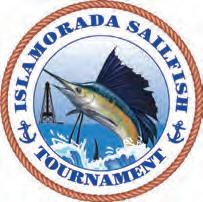


TRACY PATTERSON
Costa Rica is a renowned destination for anglers, ofering calm seas, ideal fshing conditions, and worldclass fshing. It is especially popular among female anglers due to its safety, tournaments, and supportive crews, making it an unforgettable experience.
If you’re seeking high odds of catching billfsh, Costa Rica is the place to be. On a full day ofshore, it’s common to get multiple strikes. Te fat, calm seas make it enjoyable for anglers of all levels, letting you focus on reeling in catches rather than battling rough waters.
Costa Rica hosts two ultra prestigious women-only tournaments: the Ladies Angler Tournament at Los Suenos Resort and Marina, and the Pescadora Billfsh Championship at Marina Pez Vela. Both tournaments create a supportive
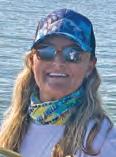
yet competitive environment for anglers of all skill levels. Te Pescadora Championship is
particularly unique, ofering two Female Angler of the Year awards based on diferent fshing techniques. It encourages women to challenge themselves and grow in the sport.
Costa Rica is ranked #1 in Central America for safety, and recent laws further protect women from harassment. Female anglers can feel comfortable walking around resorts and marinas. Charter feets also adhere to strict safety regulations, ensuring peace of mind while on the water.

Whether you’re staying at a boutique hotel or a private home, Costa Rica ofers a range of accommodations for groups of all sizes. Many resorts are conveniently located near marinas, allowing easy access to fshing trips and other adventures.
Costa Rica is home to many women who support the lady angler movement. Te captains and crews are eager to teach beginners, helping them hook their frst billfsh or refne their skills. With women accounting for a growing percentage of anglers, Costa Rica ofers a welcoming and empowering environment for female anglers.
Whether you’re an experienced angler or a frst-timer, Costa Rica ofers an unbeatable fshing experience. Its exceptional conditions, tournaments, safety, and camaraderie make it the top destination for lady anglers.
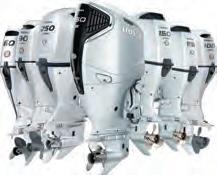





IBy Capt. Michael Okruhlik
t’s that thrilling time of the year, founder time! Te fall migration, reaching its peak in November along the Gulf Coast, promises an exciting infux of founder to their spawning grounds. Louisiana, following Texas, has also implemented a closed season during this peak run. But remember, the inability to keep fatties during this time doesn’t dampen the thrill of catching them.
Flounder will be migrating into the Gulf during this time, so the apparent ambush areas will be around passes that lead to the Gulf. Te founder will position themselves in diferent regions based on the tide level and current strength. In addition to using their burying-in-the-sand ambush technique, they also utilize structure in several ways.
First, any object that protrudes above the bottom is a great ambush point. Tis ofers a current break for forage fsh to gather directly above a buried founder, making for an easy meal. Objects such as bulkheads are also great ambush points. Flounder like to position themselves against the solid barrier and I think this can be for two separate reasons depending on what other factors are at play. As mentioned above, it could be a current break, especially if the bulkhead has a corrugated shape. When a founder settles against a bulkhead, its prey has less direction in which it can fee, allowing the founder greater odds of capturing it. When targeting founder, never pass up a bulkhead.
Secondly, founder can be caught using a variety of lures and live bait, especially if you keep it in contact with the bottom to increase your chances of a strike. When it comes to live bait, a frisky mullet is your best bet for landing a larger founder. If you’re aiming for a trophy, this is the way to go. Personally, I prefer fshing with lures, particularly the paddle tail style. Jerk-style sof plastics and bucktails can also be efective when worked in the same manner.
If I had to pick a tide to maximize my time on the water, I would choose a medium fow outgoing. Although there are no set rules that fsh always follow, I feel the founder feed more on their way out to the gulf, utilizing
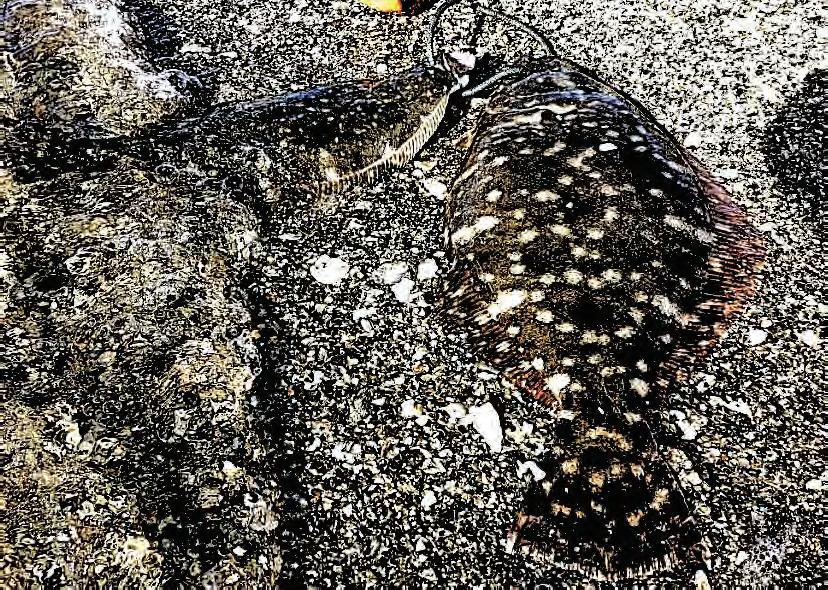
the current to ease their journey. Contrary to the incoming tide, they bury themselves rather than fght against the current.
Don’t let the closed season discourage you from targeting founder during this migration; it will have its advantages. Going forward we will undoubtedly have a larger founder population, but the instant gratifcation will be a lot less trafc in our favorite founder spot! I will use the closed season to target a new personal best this season, as should you.
Capt. Michael Okruhlik is the inventor of Knockin Tail Lures® and the owner of www.MyCoastOutdoors.com.

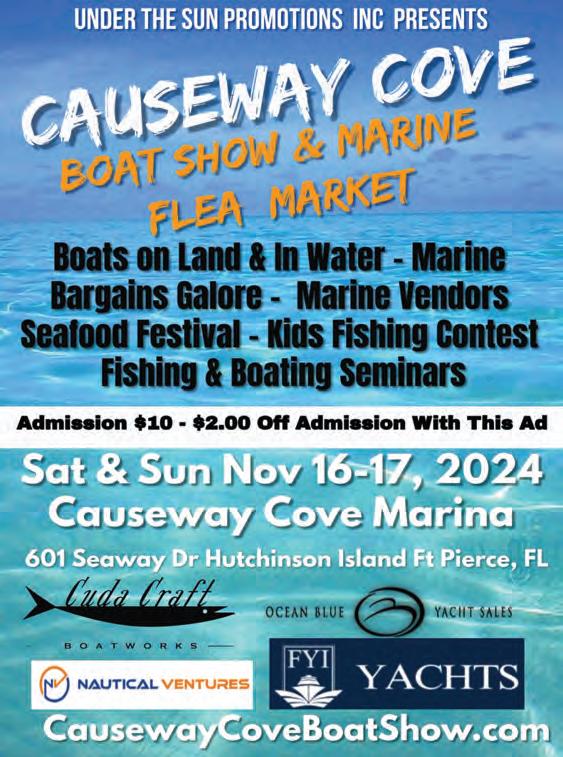

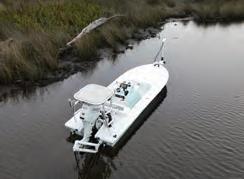

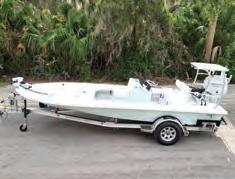
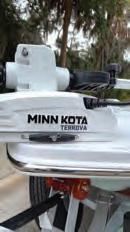




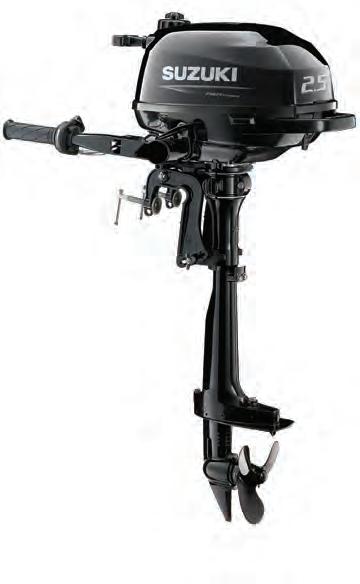

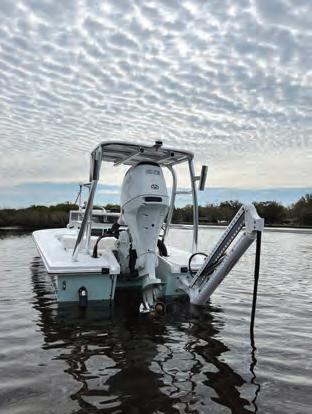

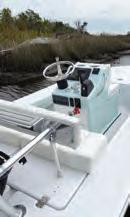
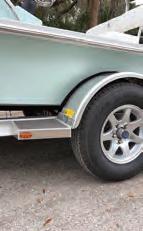
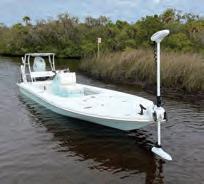
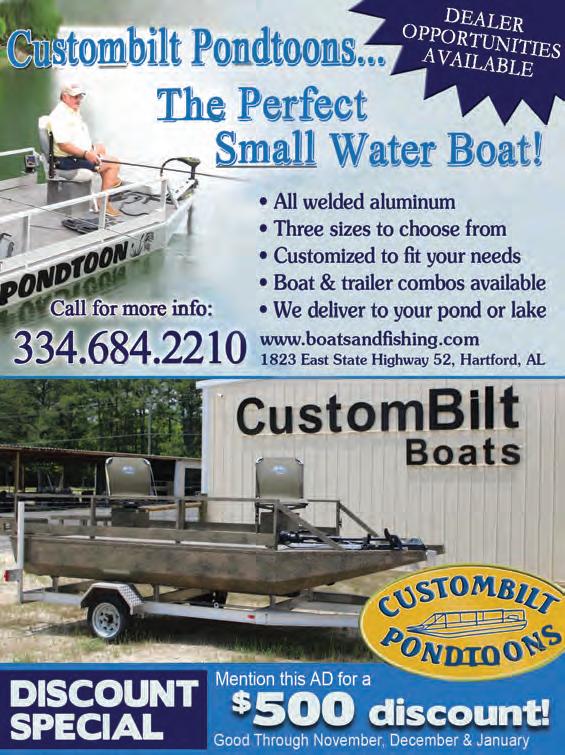
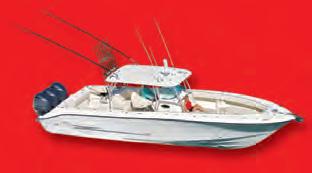



OTim Barefoot

f course, October is when it all starts, but if you like to bottom fsh, then November is the month the turbo kicks in, leading to the crescendo of the year… December. I’ve always said the week of Christmas is the apex of the grouper fshing calendar, and I’ll stand by that statement now. Tis is when larger (male) gags move inshore to establish their territory on inshore ledges, wrecks, and live bottom, much like buck deer making scrapes and rubs to mark their territory. Tese males now wait for the smaller females to show up in numbers to spawn, and the bite traditionally goes of the charts.
A small piece of hard bottom can attract large numbers of fsh if it contains the right ingredients. First and foremost, you need to locate their food. Go to the places that have traditionally held the bait—cigar minnows, sardines, beeliners, etc. “Find the bait, fnd the fsh” has been my thought process for years. Tese fsh won’t show up to a party without food—common sense. You can anchor up on a stack of bait without seeing a big mark of fsh, but afer a few bites, you’ll notice the screen light up with more and more fsh showing up.
Anchoring up is key to shallow water grouper fshing. Te sound of fsh feeding travels great distances and doesn’t go unnoticed. Once an area is fred up, constant bites supercharge the atmosphere down there. If you’re drifing, you won’t get a specifc area fred up; you’ll only go back where you got bites. But if you anchor, the fsh come to you to join in. Tis draws the alpha predators—big sharks. Yes, you’ll lose some fsh and tackle to these bruisers, but enjoy the ride while it lasts. When sharks show up, it’s time to move on to another ledge or further down the same one.

Back to noise... Keep in mind that while we hear very little, fsh hear everything. Sound travels far underwater, and everything you do on deck—slamming cooler lids, dropping hard objects, loud music, yelling—is heard by the fsh. It could be the diference between catching smaller cows or big bulls. Large male groupers didn’t get old by being dumb. You don’t kill big bucks by being noisy, so treat your fshing with the same respect.
Te folks that target grouper come home with grouper. Te ones who go “bottom fshing” with cut bait and chicken rigs come home with “bottom fsh.” As Franklin Covey said, “begin with the end in mind.” If you’re targeting grouper, think and act like it. Put baits on the bottom that avoid trash bites. Spend time jigging up some of that “trash” and drop them back down on a Decoy Jig for optimal results. Watch some of my videos on YouTube (Tim Barefoot) for examples of what I’m saying.
For more information, visit barefootcatsandtackle.com.
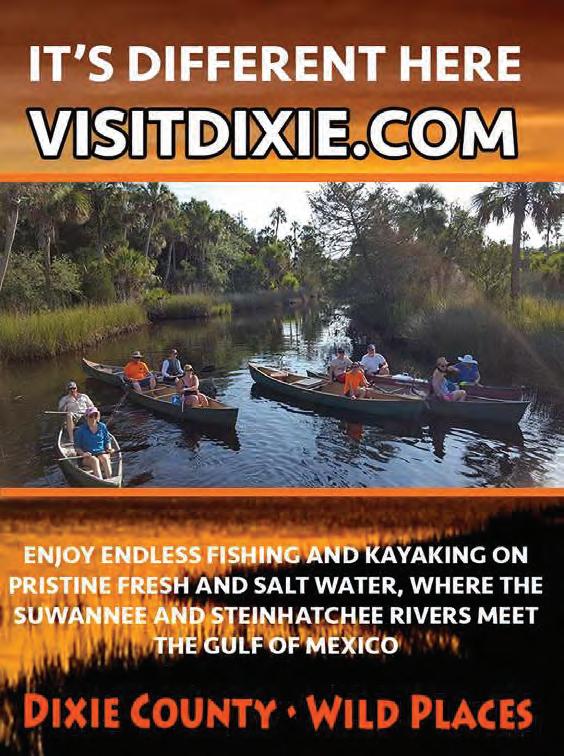




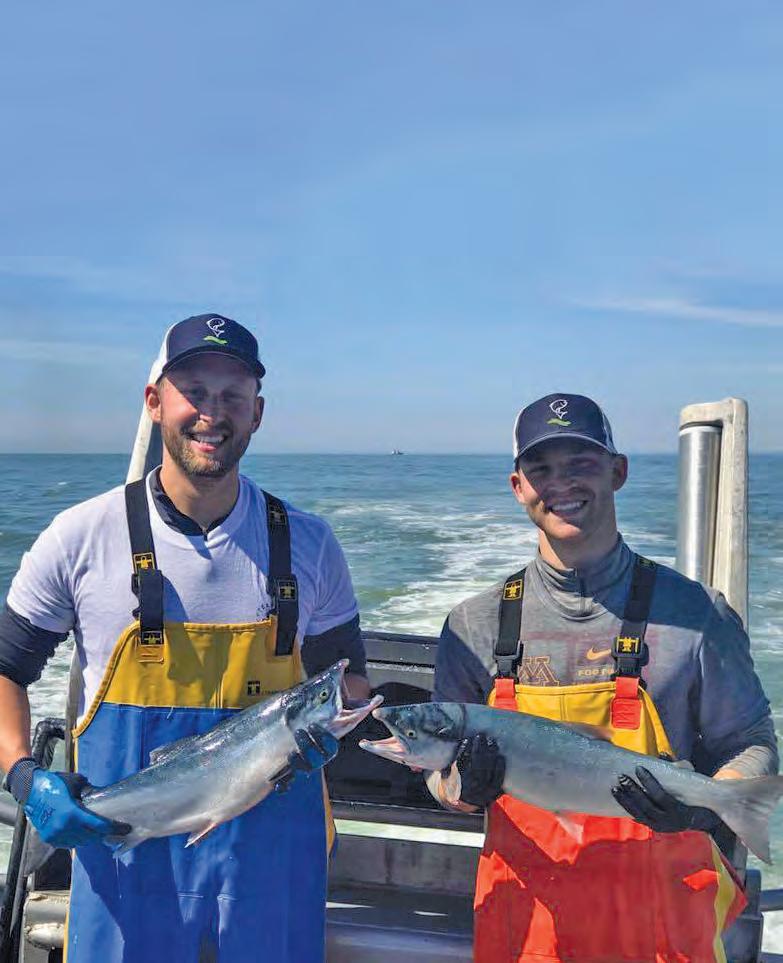


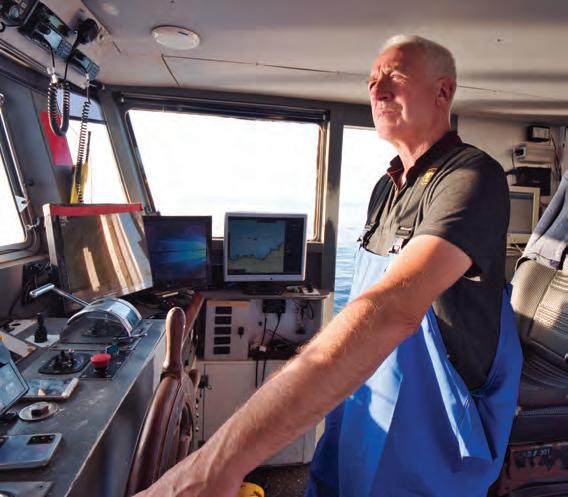
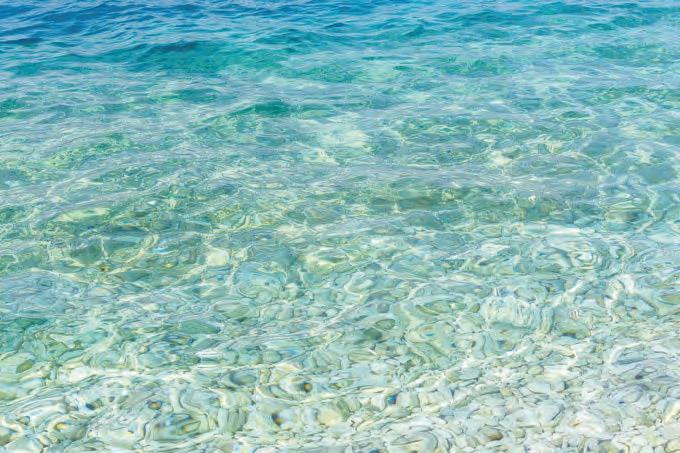




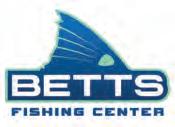

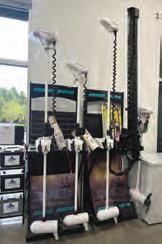




You want AI Routing! Let TZ MAPS with AI Routing make route planning a snap. Don’t take our word for it. Scan here to see for yourself how easy it is!